WANT TO WIN $100 CASH?

See page 6 of the third section for details!


See page 6 of the third section for details!



Volume 25, No. 10

 By Amy Kyllo amy.k@star-pub.com
By Amy Kyllo amy.k@star-pub.com
GOODHUE, Minn. –



Ever since fth grade, Justin Buck has been begging his parents to let him drop out of school and dairy farm. Now, as a 2023 high school graduate, his wish to farm is coming true.
“Ever since I was young, I dreamed of running the family farm someday,” he said.
Buck is not alone in his dream to farm. His good friend and close neighbor, JJ O’Reilly, is following the same path. Both are joining their respective dairy operations immediately out of high school.
Growing up just a mile apart with parents who are friends, the two have known each other their whole lives.
Jus n Buck (le ) and JJ O’Reilly smile June 12 on O’Reilly’s parents’ farm near Goodhue, Minnesota. The two friends are joining their families’ respec ve dairy opera ons immediately out of high school.
Yet, each came to the decision to farm independently from the other. Both knew in middle school that they want-
ed to dairy farm and planned to do so regardless of what their friend decided. The young men grew up
on similar farms. Buck’s organic farm milks around 130 cows with 500 acres while
O’Reilly’s organic farm has about 161 cows and 600 acres. Both farms have sandbedded free stalls, but Buck’s farm has a robotic milking system while O’Reilly’s has a double-16 parallel parlor. Buck will be joining his dad, Dennis, and older brother, Austin, and O’Reilly will be joining his dad, Chris, and uncle, Tony.
They both understand that dairy farmers play a key role in society and want to be part of that.
“Only 1% of the world is feeding 100% of the world,” O’Reilly said. “That 1%, I just kind of want to be part of that.”

Buck agreed.
“It feels good to know that you are helping the world out big-time getting food,” he said. “You’re helping people.”
Turn to GOODHUE GRADS
WOLF LAKE, Minn.
– On May 16, after wintering at Duane and Tyyni Salmen’s farm near Wolf Lake, about 100 cows from three separate herds were ready for their biannual migration.
100 acres of pasture awaited them ve miles away at a second site where the Salmens’ son and daughter-in-law, Lanny and Jill Salmen, live with their four children. Another partner in the operation, Scott Makela, was on hand to help load and transport the cows. Using two trucks and cattle trailers, the process of moving
the cows was set to begin about 9 a.m. and end by 3:30 p.m.
After moving back and forth each fall and spring for 17 years, the Salmens said the cows know their routine and seem to enjoy it, especially the return to summer pasture.
“We will milk a little early on moving day,” Lanny said.
“Then Dad and Scott will each grab a truck and trailer and start moving cows while I give the parlor a really good washing and make sure it is all nice and clean. Then we start hauling equipment.”
The wash panel, pulsator control box and main control panel all move back and forth from barn to barn. The milkers and takeoffs move too. Only
bulk tanks come in duplicate, one at each site.
The herd is a combination of three individually-owned herds, each herd having a certain color of ear tag. Lanny’s 60 cows wear yellow, Scott’s 42 wear green and Duane’s 12 wear white.

The cows are Holsteinbased crosses with Brown Swiss, Montbéliarde, Fleckvieh, Normande, Swedish Red and a little Jersey.
“Our cows don’t look like the neighbors’ cows,” Duane said.
At Duane’s site, with its enclosed freestall barn and certied manure pit, the cows are milked during winter in a swing-7 parlor. At feeding time, baleage bales are unrolled and a TMR feed mix made up of corn silage, grain,
“All dairy, all the time”™AMY KYLLO/DAIRY STAR
General Manager/Editor
Mark Klaphake - mark.k@dairystar.com

320-352-6303 (ofce)
320-248-3196 (cell)
320-352-0062 (home)

Ad Composition - 320-352-6303
Nancy Powell • nancy.p@dairystar.com
Karen Knoblach • karen.k@star-pub.com
Annika Gunderson • annika@star-pub.com
Editorial Staff
Jan Lefebvre - Assistant Editor
320-290-5980 • jan.l@star-pub.com
Maria Bichler - Assistant Editor
maria.b@dairystar.com • 320-352-6303
Danielle Nauman - Staff Writer
608-487-1101 • danielle.n@dairystar.com
Stacey Smart - Staff Writer
262-442-6666 • stacey.s@dairystar.com
Abby Wiedmeyer - Staff Writer
608-487-4812 • abby.w@dairystar.com
Tiffany Klaphake - Staff Writer
320-352-6303 • tiffany.k@dairystar.com
Amy Kyllo - Staff Writer amy.k@star-pub.com
Consultant
Jerry Jennissen 320-346-2292
Advertising Sales
Main Ofce: 320-352-6303 Fax: 320-352-5647
Deadline is 5 p.m. of the Friday the week before publication
Sales Manager - Joyce Frericks
320-352-6303 • joyce@dairystar.com
Mark Klaphake (Western MN) 320-352-6303 (ofce)

320-248-3196 (cell)
Laura Seljan (National Advertising, SE MN)
507-250-2217 • fax: 507-634-4413 laura.s@dairystar.com
Jerry Nelson (SW MN, NW Iowa, South Dakota)
605-690-6260 • jerry.n@dairystar.com
Mike Schafer (Central, South Central MN)
320-894-7825 • mike.s@dairystar.com
Amanda Hoeer (Eastern Iowa, Southwest Wisconsin)
320-250-2884 • amanda.h@dairystar.com
Megan Stuessel (Western Wisconsin)
608-387-1202 • megan.s@dairystar.com
Kati Kindschuh (Northeast WI and Upper MI)

920-979-5284 • kati.k@dairystar.com
Julia Mullenbach (Southeast MN and Northeast IA)
507-438-7739 • julia.m@star-pub.com
Bob Leukam (Northern MN, East Central MN)
320-260-1248 (cell) bob.l@star-pub.com
Class III milk prices are in a downward spiral. Minnesota Sen. Tina Smith hosted a meeting with dairy farmers in Kenyon, Minnesota. “We talked a lot about what we can do to support strong demand for dairy products,” Smith said. “That’s why I support the Dairy PRIDE Act to make sure that if something is calling itself milk in the grocery store it actually comes from a cow or goat or sheep or comes from some mammal. We talked about trade policy and making sure that American-produced cheese and other milk products have a fair shake and an opportunity to compete in global markets.” Regarding the dairy title in the new farm bill, Smith supports an update to the Dairy Margin Coverage program.
Bongards announces expansion
Bongards Creameries is expanding its Perham, Minnesota, plant, increasing daily capacity by 30% to 5.5 million pounds of milk. This project includes the milk intake bays, cheese packaging equipment, whey warehousing and wastewater treatment. “We will be able to continue supporting the growth of our business, allowing our current farmer-owners to expand and allow us to bring on new members,” said Daryl Larson, CEO. The project is expected to be completed in 2025.
Preparing for the farm bill dairy title





Senate Agriculture Committee Chair Debbie Stabenow and House Agriculture Committee Chair Glenn “GT” Thompson have experience with dairy policy. American Farm Bureau Federation dairy economist Danny Munch said that is positive news going into the farm bill process.
The Dairy PRIDE Act is one priority, “making sure that products that are milk and dairy get those terms rather than some of the alternatives,” Munch said. Dairy Margin Coverage adjustments are also being sought. Trade issues are also addressed in the farm bill. Munch said Canada’s supply management program complicates the trade relationship. “There’s really no incentive for them to follow the rules that they signed up for in the U.S.-Mexico-Canada Agreement, and we don’t expect them to suddenly start following the rules and accepting U.S. dairy products into their country,” Munch said. “We’re continuing to work with the Trade Representative’s Ofce on our challenge within the trade agreement.”
FBM provides overview of Minnesota dairy sector Minnesota dairy farms spent an average of $1.9 million in 2022. According to data from the Minnesota Farm Business Management program, the majority of that money was spent locally. The median dairy farm earned $153,780, up from $114,261 in 2021. The average price



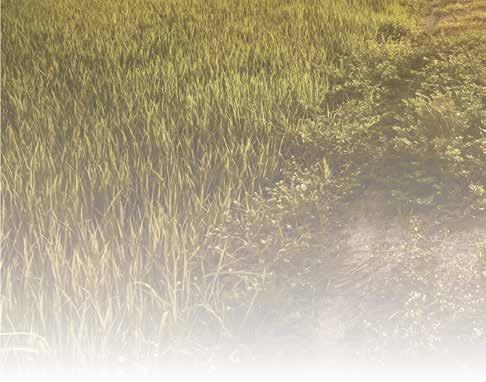





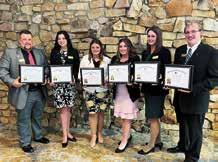

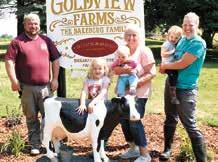














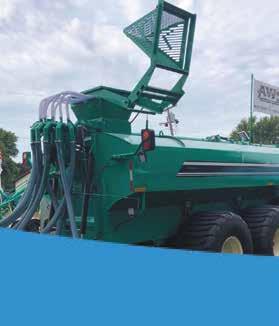























received for milk increased 30% from $18.58 per hundredweight in 2021 to $24.24 last year. The FBM summary said dairy farmers showed a prot of $1.93 per hundred pounds of milk or about $491 per cow. The average herd size was 274 cows, and milk production averaged 25,485 pounds.


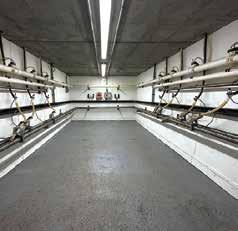
A cautionary note for 2023
While a strong milk price in 2022 boosted protability, the Minnesota State Farm Business Management Dairy Farm Sort said it is important to be alert to potential challenges ahead. “Dairy producers may need to focus on maximizing milk components and managing their costs in order to maintain protability in a more challenging market in 2023.”
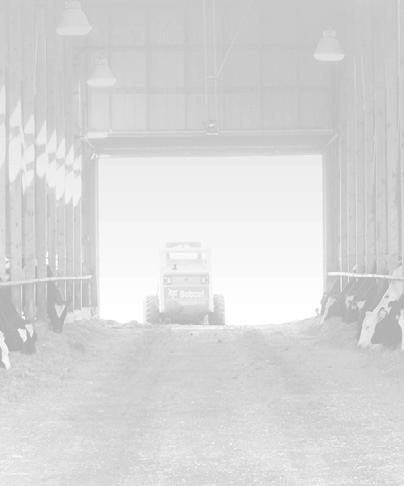
Seeking dairy checkoff transparency



Two groups are calling on Agriculture Secretary Tom Vilsack to release the dairy checkoff program’s nancial information. Farm Action and the National Dairy Producers Organization said these annual spending reports are mandated by law but have not been released for the years 2020, 2021 and 2022. The two groups cite the current economic hardship facing dairy farmers in its criticism of the National Dairy Promotion and Research Program.

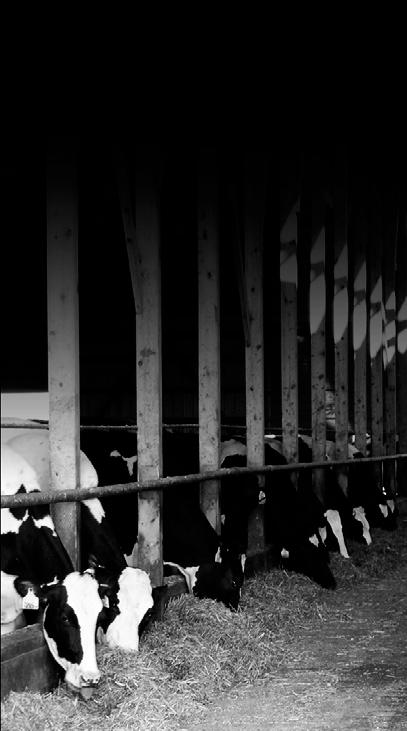
Expanding access to veterinarians in rural areas
Rural communities are faced with a shortage of essential veterinary services. The Veterinary Medicine Loan Repayment Program provides student loan reimbursement to veterinarians who practice for three years in federally designated shortage areas. A similar program is available for medical doctors, but their loan repayments are exempt from federal withholding taxes. The VMLRP payments are not. Minnesota Rep. Michelle Fischbach is one of the sponsors of a bill to address that inconsistency.
Precision technology at work
Technological advances are being seen throughout the dairy industry, including robotic milking systems, genomics and electronic ID tags. Holstein Association USA and Zoetis have had a relationship for nearly 10 years, working on genomics. Zoetis Vice President of Precision Animal Health Dr. Jason Osterstock said the use of DNA testing

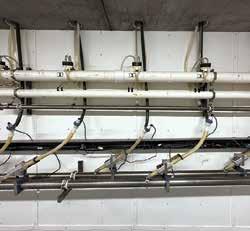
offers insight into an animal’s potential contribution and value to the herd.



Sexed semen, embryo transfers and in vitro fertilization are other examples of precision technology in the dairy sector. “I think we’re also going to see our ability to select for feed efciency, our ability to select for cows that produce naturally less methane; those are all going to unlock opportunities for us,” Osterstock said.
Yara, DMI collaborate

Yara North America and Dairy Management Inc. have launched a new soil health collaboration. This work is meant to complement the Dairy Soil & Water Regeneration project and will explore the use of organic fertilizers derived from manure.


Museum highlights Rep. Peterson
The Collin Peterson Exhibit has been unveiled at the Becker County Museum in Detroit Lakes, Minnesota. The exhibit includes the desk former House Agriculture Committee Chairman Collin Peterson used while serving in Congress as well as key documents and memorabilia. Peterson spent 30 years in Congress, culminating in January 2021.
Appointments made to Minnesota Board of Animal Health
Minnesota Gov. Tim Walz has appointed Steve Neil and Brandon Schafer to the Board of Animal Health. Neil is a cattle producer from Northeld, and Schafer raises swine at Goodhue. Terms expired for Dean Compart of Nicollet and Jim Vagts of Harmony.
Trivia challenge
It takes 12 pounds of whole milk to make 1 gallon of ice cream. That answers our last trivia question. For this week’s trivia, what American ice cream company bills itself as “the ice cream of the future.” We will have the answer in our next edition of Dairy Star.
Don Wick is owner/broadcaster for the Red River Farm Network, based in Grand Forks, North Dakota. Wick has been recognized as the National Farm Broadcaster of the Year and served as president of the National Association of Farm Broadcasting. Don and his wife, Kolleen, have two adult sons, Tony and Sam, and ve grandchildren, Aiden, Piper, Adrienne, Aurora and Sterling.
They were both active on their dairy farms growing up. This spring, Buck decided not to play baseball so he could farm more. He feeds calves every day, does eldwork and helps with moving fence. The Bucks intensive graze their milking herd on pasture during forage season.
O’Reilly milks cows and helps with eldwork.
“Put me in the tractor, put me in the barn, (doesn’t) matter to me,” he said.

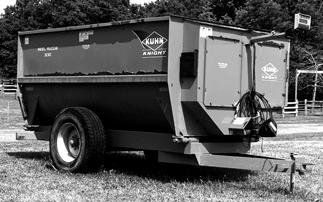
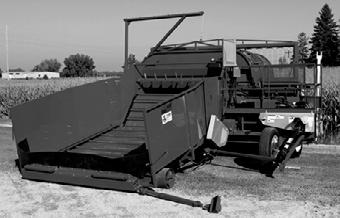


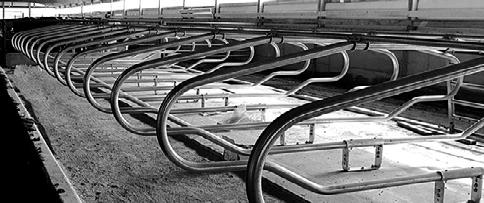
Neither plans to attend college before starting their full-time farming career. They both considered the University of Wisconsin-River Falls Farm and Industry Short Course, but both decided they had sufcient mentorship at home.

“I can learn more probably from my family,” Buck said.

The recent high school graduates said they have gotten pushback from teachers, especially in middle school, who felt that college was the only way to succeed. O’Reilly said there has been improvement, though, in understanding from teachers that a living can be earned without a college education.



Buck is especially appreciative of the opportunity to learn from his dad. His grandpa passed away when Buck’s dad was young.
“He had to learn a lot of things on his own,” Buck said. “I just looked up to that. I am thankful that my dad is here to teach me everything.”
Buck and O’Reilly hope to buy

in to their farms in the future. Their operations currently have sufcient facilities to support additional members of the operation. However, the freestall barn on Buck’s family’s farm only has capacity for 10-20 more animals before new buildings would need to be added.

High prices are the biggest hurdle they said they expect to face in their careers, especially as they both hope to eventually expand their respective operations.
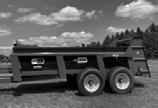



As they look toward their futures, both have management factors they plan to focus on for their success.
For O’Reilly, success starts with keeping track of the nancial minutiae of the business.
“If you can be good at nances, you can be good at farming,” he said. Buck agreed. He also said he wants to focus on having a well-organized farm.

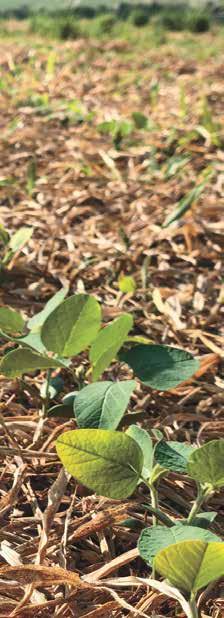
Both young men are excited as they look to the future. For Buck, he looks forward to someday owning the farm alongside his brother.
For O’Reilly, he is most excited about his new title.
“When someone asks you, ‘What are you?,’ I can say, ‘I’m a full-time dairy farmer,’” he said.
Though farming can be challenging, both are ready to dairy.
“Ever since a young age, I’ve been in love with it,” Buck said. “There denitely are those hard days, but yet again, you will have your good days.”

 By Tiffany Klaphake tiffany.k@dairystar.com
By Tiffany Klaphake tiffany.k@dairystar.com

WAVERLY, Minn. – Over
the last 150 years, the Bakeberg family farm has hosted many thousands of guests at their Wright County dairy farm near Waverly.
Most recently, they hosted more than 2,400 people June 10 for the Wright-Carver County Breakfast on the Farm. That same evening, more than 300 people showed up to celebrate the Bakebergs’ farm, Goldview Farms, turning 150 years old.
“In between the two events we had a wind and hail storm,” Pat Bakeberg said. “We got an inch and a half of rain and lost 120 acres of crops that had to be replanted.”
Being dairy farmers, the Bakebergs are familiar with the highs and lows that come with farming, even if they all happen in one day.
The family has had a big impact on the community throughout the years. This
marked the ninth time the Bakebergs have hosted the Wright-Carver County Breakfast on the Farm. The family actually helped initiate the very rst breakfast in Wright County 14 years ago. Pat’s parents saw the event happening in other counties and wanted to make sure Wright County hosted one too.
“They (the general public) are so far removed from the farm; most of them can’t even say their grandparents had a farm,” Pat said. “That’s why it’s important to me to open the doors to the public. That’s why we do it so often.”
Pat’s mother, Faye Bakeberg, lives on the farm and helps to watch his kids and feeds the calves when help as needed.
“It’s a good way to raise the kids and now my grandkids,” Faye said. “It’s just a good life, and I love being outside and doing stuff.”
Faye fondly remembers that rst breakfast on the farm event.
“The rst year we had around 700 people,” she said.
The 150th-year milestone is one Faye said she and her late husband, Greg, looked forward to for many years.
“It’s a real honor to have something like that,” Faye said.
The farm passed hands from Faye and Greg to their son and daughter-in-law, Pat
Grapple buckets, bale spears, rock buckets etc.
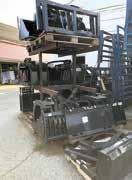
Large 8-10 Buckets
and Joanna, in January 2022 after the unexpected passing of Greg. Now Pat and Joanna milk 120 cows in a double-6 parlor on the historic farm. Together, they are raising the sixth generation of Bakebergs – Harper, Olivia and Hattie.
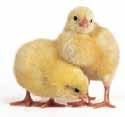
They farm 850 acres of crops and nish out their steers. Pat does custom combining and big-square baling and, along with a neighbor, owns a custom chopping business as well.
In the last 150 years,
the farm has grown and changed.
The family can trace its history to 1873 when Henry Bakeberg Sr. left Prussia, came to the U.S. and purchased 80 acres of land. At the time, the land was owned by the Crook family, who three years earlier has purchased it from the railroad.
“Henry Sr. paid $1,000 for the original 80 acres according to the abstract,” Faye said.


Henry Sr. passed the farm onto his son, Henry Jr., who then passed the farm to his son, Carl. Carl then passed the farm onto his son, Greg, Pat’s dad.
The freestall barn was built in 1968, and the original tiestall barn was retrotted to be a swing-4 parlor. Pat said he plans to pass along bits of history like this to his own children.
“It was a state-of-the-art parlor when it was built in 1968,” Pat said. “We were one of the rst in the county to have a parlor, and we even have a newspaper article that talked about it.”
In 2006, after Pat graduated from college and returned home to farm full time, the parlor was remodeled again to be a double-6 parlor, and 20 stalls were added onto the freestall barn.
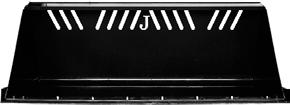
and mineral supplements is dumped in the barn’s feed alley. During the summer months at Lanny’s site, cows are milked in a swing-14 parlor. Besides grazing on pasture, they receive their total mixed ration ¬right on the ground in the pasture.


“My place, where we keep the cows for the winter, is maxed out at 100 cows with the barn and the facilities,” Duane said. “In the summer (at Lanny’s site), we can milk more because we can put the cows outside.”
The unique partnership between the three farmers is successful through a nely tuned agreement that they said works well. Lanny began partnering with Duane in May 2003. Scott joined in December 2016. In both cases, the expectations and nancial agreements were clearly spelled out with an escape clause worked in.
The rst partnership between father and son came when Lanny was milking cows for a dairy farmer in Alaska. He had moved there for an adventure.
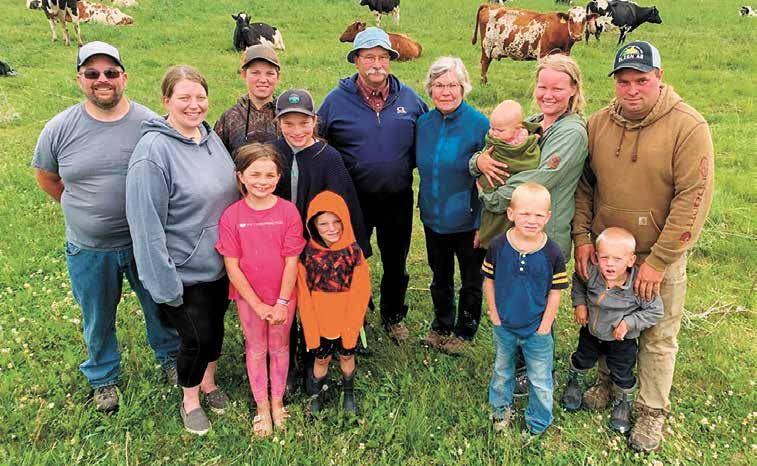
“Dad asked if I wanted to buy some cows and move in and start farming with him,” Lanny said. “The agreement was he would have his cows and I would have my cows. I would buy all my feed from dad.”
The agreement also included the opportunity to give a one-month notice if the partnership was not working and either wanted out. As the farm operations progressed, they updated the agreement.







“I bought a baler and started renting some land,” Lanny said. “The written agreement was that I could run crops according to the value of equipment I had invested in the farm, but then I would still sell my crops to dad, and we had a method of dividing it up with the number of cows we had.”
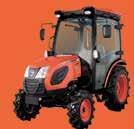
The amount of feed used was recorded each day. Every month they
bill.
“For example, if dad had 45% of the feed and I had 55%, we would split the feed bill according to the cow’s numbers on the monthly DHIA testing day,” Lanny said. “We would split the milk check according to the percent of milk you produced.”
They split the feed bill for heifers and dry cows by percentages as well.
“You are paying your share of the feed bill at all times (monthly),” Lanny said. “I have a fairly detailed Excel



spreadsheet, so I can do it pretty easily now. It used to be a full day of scratching paper, but now I can do it in a couple of hours.”
The Salmens were certied organic in 2008. By then they had worked out a pasturing routine. The idea had been to build a summertime parlor at Lanny’s site so that they could run more cows in those months and then dry off cows for the winter so that they would freshen in the spring. This would ease things for the freestall barn at Duane’s site.
When Scott joined the partnership in 2016, the Salmens simply drew up a similar agreement.

“I started working for Duane when I was 12 years old and all through high school,” Scott said. “Afterwards, I had my own herd of cows in 2005 to 2006, but that didn’t work out. Then I went into construction, but I just really like cows and not having to wear a tool belt.”
Turn to SALMEN-MAKELA | Page 9



When he joined the Salmen partnership, he began buying cows 10 at a time, still working full-time in construction for a while and working weekends at the Salmen farm sites.
Lanny said having Makela join the partnership made sense.
“It was no risk since Scott was nancially separate,” Lanny said. “We had the same agreement that Dad and I had. If it wasn’t working out, he could take his cows and go.”
By this time, Duane wanted to slow down a bit anyway, and he dropped his cow numbers.
“Scott doesn’t own any land; Lanny owns this place here, and I have the other place,” Duane said. “Scott rents the pasture in the summer and then buys feed in the winter.”
They calculate pasture cost based on number of cows, and that gets paid out each month.

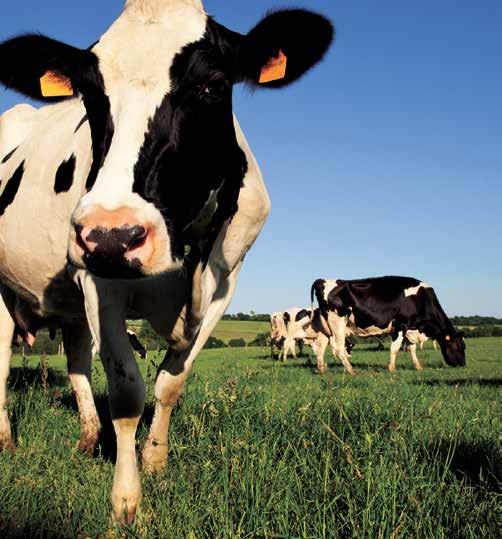


“I think we have it broken down pretty well,” Lanny said. “The nice thing is each year a person can go back and look at the numbers and ask if these numbers are working out. We can say the cost of this or that has gone up or down and so we go up or down accordingly.”
Lanny’s site has 130 acres of pasture with around 90 acres under irrigation, and Duane’s has 130 acres of pasture. Between what they rent and own, they have a total of 600-700 acres of cropland.



“We keep the cows on pasture from May through the end of September/ early October and shoot for about 40% dry matter coming from the pasture,” Lanny said.
The pasture at Lanny’s site is divided into four main paddocks that are divided into small paddocks using polywire fencing so the herd can be rotationally grazed during the growing season. The cows and dry cows pasture there and are moved every day. Calves are pastured at Duane’s site. Calving is done seasonally in the spring and in the fall.
The jobs for the operation involve family members of all three partners. Lanny’s wife, Jill, does the bulk of the milking and manages the parlor. Their four children are home schooled and help with milking as well. Lanny takes care of equipment, including repairs, and focuses on crops.
“We plant silage corn, oats, barley, wheat, rye, triticale, and clover mix grasses for hay that we bale and wrap
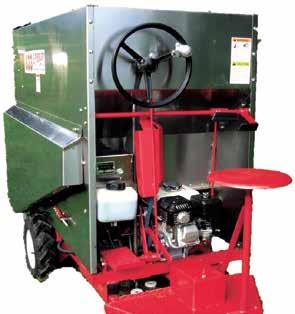



for baleage,” Lanny said. “This year we also did sunowers as a cash crop.”

Scott and his wife, Cassy, have three children. Cassy helps milk cows while Scott manages the joined herds.
“If they need help in the eld, I go help, but otherwise I primarily take care of the cattle,” Makela said. “I feed the cows out in the pasture, and after they are done eating their silage, I move them. In the winter, I go to Duane’s (site) and feed.
Although Duane is less active today, he stays involved.
“Duane helps with eldwork and wherever he is needed,” Makela said.

Duane’s wife, Tyyni, also helps.
“I probably haven’t milked a cow in two years, but up until we went down to 12 cows, Tyyni milked every Tuesday and Thursday evening and every third weekend,” Duane said. “So, she has been the cow milker.”
With a exible, yet clear agreement, the three families operate well together and allow each other to have time off from farming, sometimes by choice, other times by necessity.
“When I had cancer, I went a whole year without doing any work, but everyone else covered the job,” Lanny said. “If we have a (Salmen) family get together, Scott can cover the milking so we can go to a family reunion or whatever, and if he has a family event, (Salmens) are here to take care of everything.”
The families could avoid the fall and spring migration by moving the whole operation to Lanny’s site, but they have chosen not to do so. Duane’s site has enclosed housing for cows and a certied manure pit. It also has sentimental value, the place where Duane’s dream of being a dairy farmer came true.
“My dad started farming when I was 6 years old,” Duane said. We moved up here from Minneapolis, bought the cows in September, and then he lost his arm in October but continued farming with the neighbor’s help.”
That help has been the reason why Duane has been willing to help others who wanted to start farming.
Duane later bought his farm site from his uncle. He started farming in 1976 and has been at it for 47 years.
As the Salmen and Makela families continue to work together and adapt as needed, the cows will continue their seasonal migration within a well-dened partnership that suits all involved.




ATTENTION FARMERS...
Are rocks, re-rod or holes showing in your bunker silo?
WE CAN RESTORE YOUR BUNKER TO LIKE NEW CONDITION!
BUNKER SILO RESTORATION/ REPAIR WITH JETCRETE
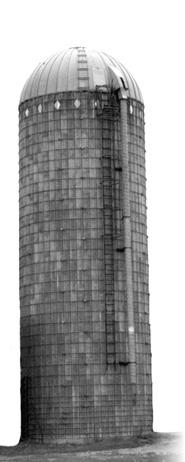
Approximately 1” of steel reinforced material added to bunker walls.
• High pressure water blasting of walls for excellent bonding.
• 6 gage heavy duty wire mesh installed
• Jetcrete -phnuematically applied concrete.

SILO RELINING WITH “JETCRETE”
BARN WALL & BASEMENT RESTORATION WITH “JETCRETE”
(Limestone, rock, block & concrete wall)
SERVING IA, MN, WI, IL AND SD
CONTACT: 800-866-7327
BECAUSE A FARM NEVER SLEEPS.
CHECKOUTTHE 7700SERIES

Waukon,IA
563-568-4526
AfterHours:
Ken563-380-3137•Dave563-380-8680 www.reiserimpl.com
HAY & FORAGE
‘20 Anderson Hybrid X, Custom Operator Pkg
Tubeline TL5500 Inline Wrapper
Hesston 565A Round Baler
Hesston 3986 14 Wheel Rake
‘20 MF 3983 Hicap Rake, 12 wheel
Claas 10’ - 10 Rotor Rake
Miller Pro 7914 Merger, 14’
‘15 Tonutti TCR 12 wheel rake
Tonutti 12 wheel Dominator rake
H&S 12 wheel rake
MF TD1620, 2 rotor tedder
‘17 JD 835 9’ MoCo, center pivot
JD 946, hyd. swing, rubber rolls
‘14 CIH DC112 Disc Mowland
Gehl 2450, 15’ hydro swing
disc mower
‘21 Rhino 3150-15’ Batwing Mower
Haybuster 2650 Bale Grinder
‘14 NDE 2906 Twin Screw TMR
MISCELLANEOUS
JD 146 Loader w/bucket
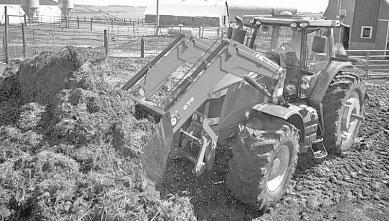
TRACTORS
‘21 MF 2850, CAH, hydro, loader, ONLY 139 HOURS!
MF GC2400, 60” deck, 500 hrs.
‘21 MF GC1723, ldr., mower, 180 hrs.
MF GC1705, w/60” deck ‘18 MF 1705, 60” deck, 200 hrs.
‘18 MF 1705, 60” deck, 300 hrs.
‘16 MF GC1705, 60” deck, 500 hrs.
‘07 NH TC34D, loader, 60” deck, 700 hrs.
‘88 MF 3650 WFWD, CAH, 5,100 hrs.
‘97 Kinze 2600, 31R15”
Sunflower 4211-9, disc chisel w/ buster bar
DMI 530B Disc Ripper
JD 712 9 shank disc chisel
CIH MRX690, 5 shank disc ripper disc
JD 980 Field Cult., 44’ w/harrow
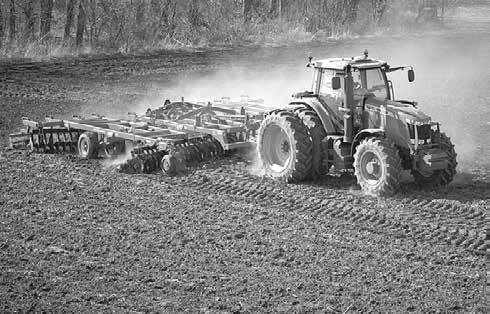
CIH 4800 30’ Field Cult, w/3 bar coil
tine harrow
‘12 Case IH 1250, 16 row, 30 liquidloaded
Loftness 20’ Stalk Shredder, NICE!! ‘08 Agco 3000 Corn Head, 8R30, poly
Gehl 100 Feed Mill
‘21 Bobcat S76, CAH, SJC, 3,400 hrs.
‘21 Bobcat S76, SJC, 2,300 hrs.
‘21 Bobcat T870, SJC, high flow, 500 hrs.
‘20 Bobcat T770, CAH, high flow, SJC, 765 hrs.
‘21 Bobcat T770, 407 hrs.
‘20 Bobcat T770, SJC, 300 hrs.
‘18 Bobcat T770, SJC, 2,400 hrs.
‘14 Bobcat S770, 3,200 hrs.
‘15 Bobcat T750, A71, joystick, 3,400 hrs.
SKID LOADERS
‘18 Bobcat 3400 SideXSide, C/H, 6,700 miles
‘19
BOTTINEAU, N.D. – Visitors at Mount Rushmore National Memorial can indulge in a cold dairy treat that was made using a recipe that was written by Thomas Jefferson. The vanilla ice cream, which has been enjoyed by people from all around the world, is produced in Bottineau, a little prairie town located about 10 miles south of the Canadian border in north central North Dakota.
Pride Dairy was founded as Bottineau Co-op Creamery in 1930. Local farmers brought their milk to the creamery where it was bottled or made into butter. The co-op began to make ice cream in 1940. Due to the dwindling number of dairy producers in the state, the creamery stopped bottling milk in 1980 and shifted its focus to ice cream and butter.
The creamery was struggling to survive when it was purchased by Jeff Beyer in 2012. Beyer had worked at the creamery since he was 16.
Kriss and Tonya Allard bought Pride Dairy from Beyer in 2019.
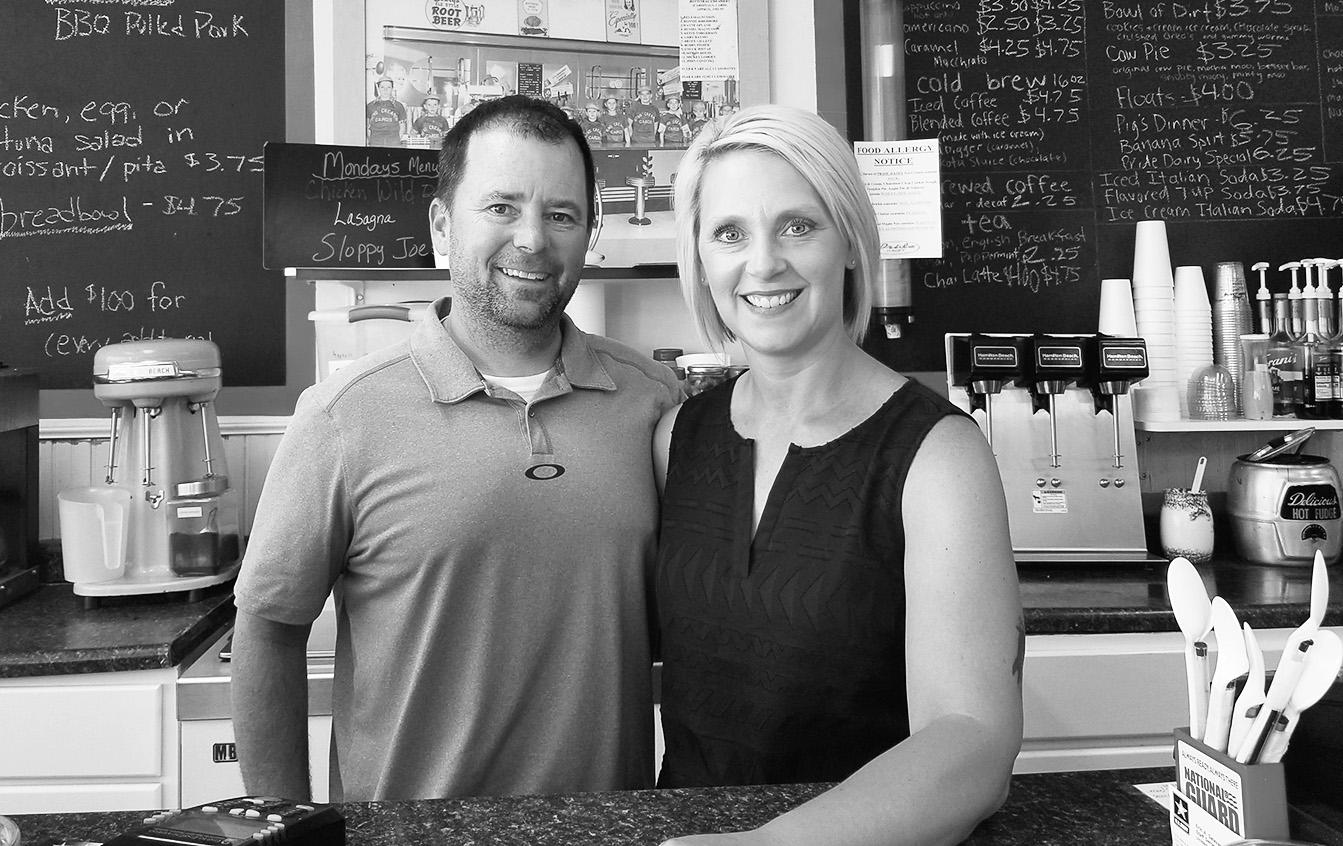
“Tonya and I had operated a food distribution business called Sunrise Delivery since 2011,” Kriss Allard said. “A big part of our business was the home delivery of milk, so we were familiar with the retail side of the dairy business.”
The Allards decided to take the plunge into dairy processing despite the fact that much of the equipment at Pride Dairy was outdated and worn out.
“We could see that the creamery had a lot of potential,” Allard said. “They had great products and great people.”
Although butter is still a large part of the business, Allard said ice cream is their future.
“Our local customers told us not to change a thing, so we haven’t,” Allard said. “Our ice cream still contains 14% butterfat, just as it did when Bottineau Co-op Creamery started making it many years ago.”
cream makers. Xanterra challenged the makers to craft a vanilla ice cream made using the recipe that was written by Founding Father Thomas Jefferson in 1780. Jefferson had served the ice cream, which specically called for Madagascar vanilla bean pods, to visiting diplomats and dignitaries.
Several ice cream makers submitted their samples. In the end, Xanterra gave the nod to Pride Dairy, and their vanilla ice cream began to be offered at the Memorial Team Ice Cream Station at Mount Rushmore. Thomas Jefferson Vintage Vanilla Ice Cream quickly became one of the most popular treats sold at the memorial.
“Mount Rushmore goes through about 8,000 gallons of our vanilla ice cream during an average tourist season,” Allard said. “One of the biggest challenges was recreating the ice cream without using the raw eggs that were called for in President Jefferson’s original recipe.”
Vanilla is by no means the only avor of ice cream being produced at Pride Dairy. They offer 18 avors on a permanent basis along with a handful of seasonal avors. Pride Dairy also sells ice cream toppings, cheese and butter.
The lineup of dairy treats offered by Pride Dairy continues to grow.
“We sell ice cream in wafe cones at our ice cream shop,” Allard said. “One of our workers got the idea of making an ice cream sandwich based on our wafe cones. We will be launching our ice cream sandwiches soon.”
Like with every business, Pride Dairy has also endured its share of setbacks.
“A storm in April of 2022 severely damaged our roof,” Allard said. “As a result, our production was cut for the next seven months. But, I view every problem as an opportunity. We used that opportunity to rebuild our plant and improve its automation.”
Pride Dairy products are currently available only in North Dakota and at Mount Rushmore. That is about to change.
“We are working on a distribution agreement with Prairie Farms Dairy,” Allard said. “We hope to begin distributing our products to a much wider area here in the Midwest. Our TJ Vanilla ice cream will soon be available in many more retail outlets.”
Pride Dairy has added new equipment and will soon be ramping up its ice cream production.
‘00 Bobcat 331E, cab, 2,000 hrs.
‘18 Bobcat E50, long arm, 700 hrs.
‘16 Bobcat E26, long arm, CAH, 800 hrs.
‘18 Bobcat E42, long arm, thumb, 600 hrs.
Pride Dairy sources its milk from Prairie Farms Dairy.
Some years back, Xanterra Travel Collection, the company that manages tourist operations at Mount Rushmore National Memorial, put out a call to ice
“We are currently making about 8,500 gallons of ice cream per month,” Allard said. “We hope to double that over the next two months.”
Some of the old equipment that was used by Bot-
soon be available at several other na�onal parks as well.
tineau Co-op Creamery continues to perform its duties at Pride Dairy.
“Our Juneberry ice cream is still being made by the Cherry Burrell V2D ice cream churn, which was manufactured in the 1950s,” Allard said.
A big boost in production is not the only news regarding Pride Dairy’s ice cream.
“Xanterra will soon be offering Thomas Jefferson Vintage Vanilla Ice Cream at Glacier National Park, Yellowstone National Park and Grand Canyon National Park,” Allard said.

intake






“They have also started selling it at The Oasis at Death Valley, a luxury resort that’s located northwest of Las Vegas.”
People are encouraged to visit North Dakota’s only remaining small town creamery. At Pride Dairy’s ice cream shop, visitors can enjoy an ice cream sundae and purchase any of a number of their products to take home.
“Everyone is excited when they walk into our ice cream shop,” Allard said. “They leave feeling perhaps a little bit guilty but also very satised.”
















We utilize the Johnes test, standard plate count, somatic cell count, and mastitis culture tests.


Which is your favorite and why? I like the somatic cell count test to see if there are certain cows that have a chronic high
How does testing with DHIA bene t your dairy operation? DHIA bene ts the dairy by being an independent source helping us make decisions regarding herd health and productivity.
Tell us about your farm. I farm here with my brother, Perry, and my sisters, Brenda and Becky. We are a second generation family farm. We raise our youngstock, nish out our dairy steers, and farm about 900 acres.
Sauk Centre, MN Buffalo, MN 763.682.1091
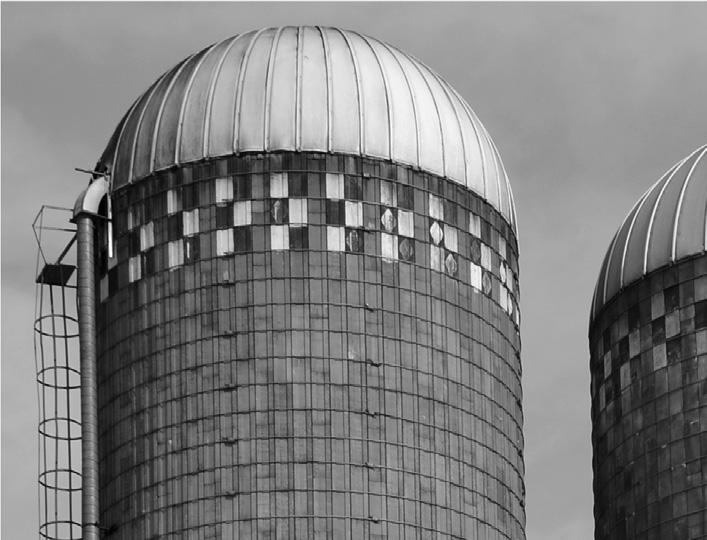
“Boy it s hot out. I have a hard time keeping my dry matter
Up until Pat started going to college, he was planning to do crop and beef farming. Meanwhile, Faye said they had been discussing when to sell the cows.
“He came home at Christmastime and said, ‘I want to milk cows,’” Faye said. “Greg and I had stopped putting money into the farm and were going to sell the cows once the silos were empty.”
While the Bakebergs do not know exactly when the original barn and granary shed were built, the family history indicates the granary building is the oldest building still on the farm.
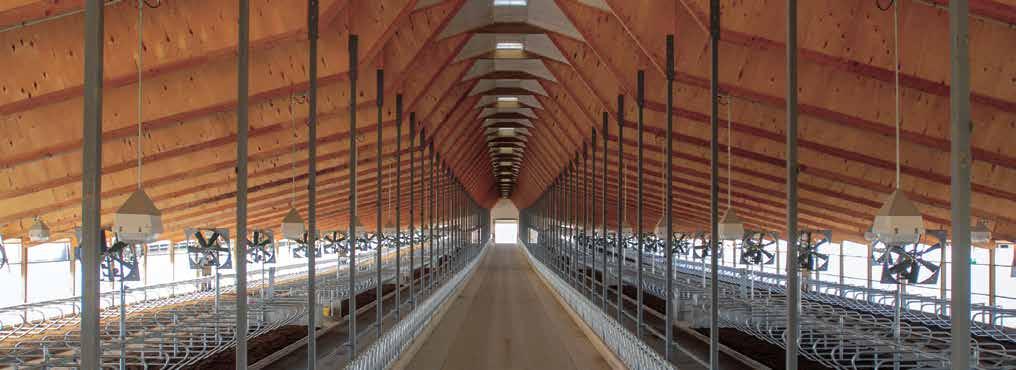
Although it has served many purposes over the years, the granary stands today, and Pat said they have no intention
of taking down the old, sturdy shed. Pat has heard the family history of the farm and plans to share the stories with his children.
“That thing is not going anywhere; it is true (2- by 6-inch lumber) and the foundation is logs,” Pat said. “It is two stories tall, and when I was younger, we would put oats in the top and all the bagged feed in the bottom. Now, it’s more of a storage shed.”
The unique landscape of Goldview Farms is one of the reasons it works so well to host events there. Having a clean yard and the buildings close together creates a natural ow for visitors to meander through.
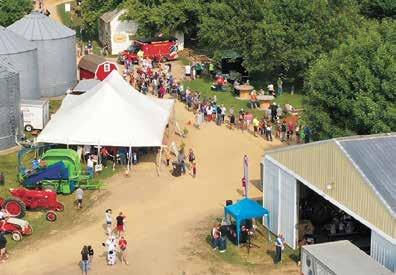
In addition to hosting multiple breakfast on the farm events through the years, Pat
County Breakfast on the Farm June 10 trails along the driveway of the Bakeberg family farm near Waverly, Minnesota. The Bakeberg family has hosted nine breakfast on the farm events.
and Joanna held their wedding reception on the farm, as did two of Pat’s siblings.
The farm has always served as a place for community gatherings and celebrations.
Pat recalls his parents opening the grounds for a rural life Sunday Mass in 1986, held by the Archdiocese of St. Paul and Minneapolis. The family
was honored to host the Mass again in 2018.
The Bakeberg family may have hosted various events during the past 150 years, but they said the events would not be possible without support from the surrounding community.
“Farming is community,” Pat said. “To me, they go hand
in hand.”
As the couple looks to the future and the raising of the potentially sixth generation of family farmers, Pat reects on the past.
“It’s cool that we are still an operational dairy farm,” Pat said. “Not too many people can say they have had ve generations on their farm.”
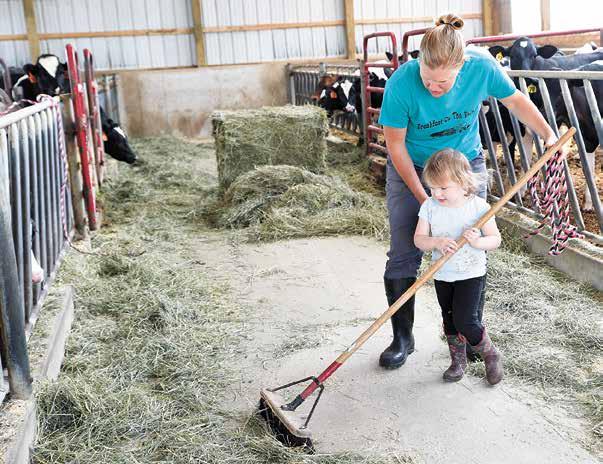


CHANHASSEN, Minn. – Bongards Creameries, a leading national cheese and whey manufacturer, recently announced a major investment for its plant in Perham. The expansion will increase overall plant capacity from 4.2 million to 5.5 million pounds of milk per day – an increase of 30%.
Bongards acquired the Perham plant in 2003, completed a signicant expansion of the plant’s capacity in 2015, expanded warehouse capacity in 2022 and replaced the existing cheese vats and evaporator in 2023.

Bongards has 181 direct patrons and an additional 93 farms that are part of co-ops that are members of Bongards.



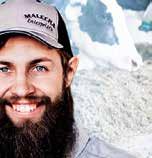


“With this latest investment, we will be able to continue supporting the growth of our business, allow our current farmer-owners to expand and allow us to bring on new members,” said Daryl Larson, Bongards CEO since January 2018. “In order to increase our milk intake by nearly a third, many aspects of the production process need to be expanded.”

Bongards is currently at capacity with milk supply from current members. The co-op has current members interested in expanding as well as interest from potential new members.

The investment includes expansion of the milk intake bays, cheese packaging equipment, whey drying and packaging equipment, whey warehousing and wastewater treatment.

















The Perham plant makes primarily cheddar cheese blocks and barrels as well as deproteinized whey, whey protein concentrate and whey protein isolate. The products produced will not change with the expansion but simply increase in volume.

The Perham plant has approximately 150 employees. With this expansion, they expect to add up to 10 additional employees at the plant.
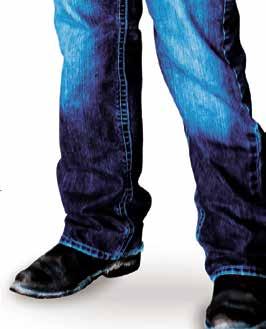
Major work on the project began in early July and is expected to be completed in June 2025. Construction is being completed by local Perham contractors.


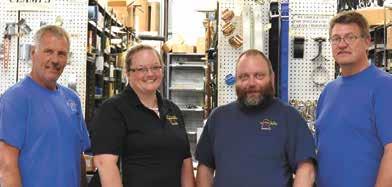

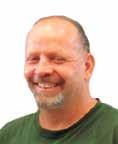
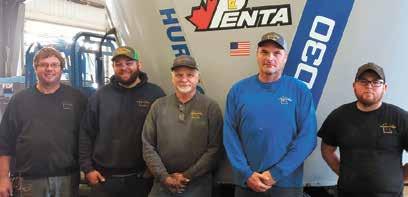






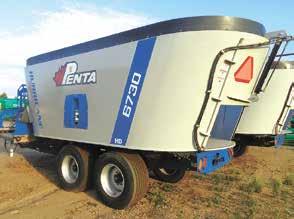



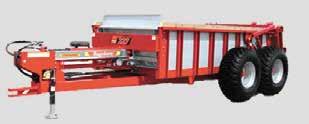

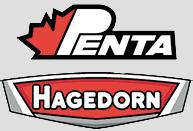

(pictured with his son Zach)
Luverne, Minnesota Rock County
650 cows
Describe the facilities you utilize for your milking herd and youngstock. Our milking herd is housed in four 6-row freestall barns that have 14-foot curtained sidewalls. We have placed stir fans throughout the barns. Our calves start out in huts and are moved to an open-front building at weaning. Our heifers spend their summers out on pasture.
What are the most productive methods you use to reduce heat stress incidences in your milking herd? We have sprinklers in the feed alleys in addition to our stir fans. The sprinklers automatically come on when the temperature reaches 74 degrees in the barn and stay on longer as the temperature rises. We recently added a CowManager system that tracks animal activity. The sand bedding in our free stalls helps keep the cows cool.
What do you do to treat a cow for heat stress? We get her in the shade and offer her cold water. If she seems especially stressed, we will give her electrolytes.
In your dairy career, what has been the best management practice you have incorporated to help animals with heat stress? We added sprinklers last year to the dry cow, fresh cow and closeup pens. We have learned that it pays to make sure that the dry cows stay comfortable during hot weather.
Tell us about your most challenging summer conditions and how that affected your herd. There have been summers when the humidity was high and the temperatures didn’t drop much overnight. If it doesn’t cool down at nighttime, the cows will feel heat stress 24 hours a day.
Tell us about your farm and family. My wife, Daci, and I have four children: Brooklyn, Makenna, Zachery and Tage. Our kids all help on the farm as much as they can. I farm with my parents, Jake and Cheryl, along with my uncle and aunt, Neil and Char Moss. We raise 500 acres of corn and 120 acres of alfalfa and grow enough feed to meet our herd’s forage needs. We have 300 acres of pasture and sell our milk to Land O’Lakes.
Michael Scheel Rice, Minnesota Benton County

150 cows
the facilities you utilize for your herd

The fresh an open-
Describe the facilities you utilize for your milking herd and youngstock. The fresh cows have an openended loang barn with large circulating fans. We have a 4-row freestall barn with thermostatic-controlled misters behind the feedline. The calves are in huts, and youngstock are in the open-sided loang barn.

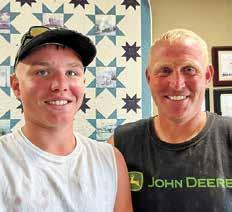
cows
Describe the facilities you utilize for your milking herd and youngstock. We have a freestall barn and pasture.
What are the most productive methods you use to reduce heat stress incidents in your milking herd? Having good ventilation by using a lot of fans in our freestall barn helps keep the cows cool.
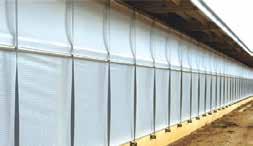
What are the most methods you use
What are the most productive methods you use to reduce heat stress incidences in your milking herd? We use lots of air with fans and sprinklers. The idea of getting them wet and drying them off repeatedly seems to work well.
What do you do to treat a cow for heat stress? We use a cattle stomach pump to get a large volume of water in the cow quickly and safely.
What do do to treat a cow for heat stress? and safely
What do you do to treat a cow for heat stress? It has been a long time since we had a cow with heat stress. Lots of cold water on top of them is one of the fastest ways to cool them down.
In has been to animals with heat stress?
In your dairy career, what has been the best management practice you have incorporated to help animals with heat stress? Having a living environment with a lot of airow and plenty of room has made the most benecial impact on reducing heat stress.
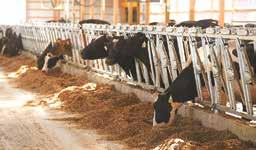
In your dairy career, what has been the best management practice you have incorporated to help animals with heat stress? Fans and sprinklers. We have always had sprinklers. We put in a new controller that controls the fan speeds and sprinklers in 2014.
Tell us about your most challenging summer conditions and how that affected your herd. When it stays above 90 degrees for several days, the cows look uncomfortable and produce less milk. We do our best to keep them comfortable. Plenty of airow and clean water are most important. During that time, we lost about 2 pounds of milk a day per cow.
summer conditions and how that affected herd When it of air milk a per cow.
Tell us about your most challenging summer conditions and how that affected your herd. Nights above 80 degrees are challenging because the cows don’t have time to cool down at night at all, which makes it tough.
Tell us about farm and family. is oriented. Kevin and Ann, parents, own the brother, Matthew, and
Tell us about your farm and family. Our farm is very family oriented. Kevin and Ann, my parents, own the dairy. My brother, Matthew, and my wife, Katie, and I, along with our families, farm alongside our parents. We milk around 150 cows in a 16-unit swing parlor. We ship our milk to First District Association. We also own and operate a breeder chicken barn as well.
Tell us about your farm and family. Our farm includes my wife Alli, my son Knute, my daughter Aislynn, my dad Kelly and a few part-time employees. Our farm has 750 acres, which we use to raise feed for the cows and for cash crops. We have a double-6 herringbone parlor. We ship our milk to Plainview Milk Products Cooperative in Plainview, Minnesota.
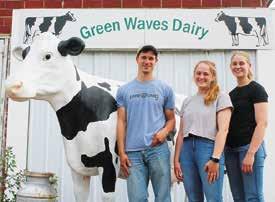
Wright County
480 cows
Describe the facilities you utilize for your milking herd and youngstock. The milking barn is a 6-row cross-ventilated barn with eight Lely robotic milking systems. In our calf barn, we utilize a positive pressure tube with curtains on both sides. The calves are in group housing on two Lely Calm automatic feeders. Dry cows and springers are housed in a naturally ventilated barn with overhead fans.
What are the most productive methods you use to reduce heat tress incidences in your milking herd? Facility design/cow comfort is by far our most productive method used to reduce heat stress. The fans in the milking barn are on a variable speed controller that utilizes a thermostat to most efciently cool the barn. Additionally, in the calf barn, we recently installed a Flap Duct system. The system is also controlled by a thermostat which switches between a cool/warm setting to maximize the volume of fresh air all while keeping the calves cool during the heat of the day but preventing them from being drafted/ chilled during the cooler temperatures at night.
Scott Muehlenhardt Belle Plaine, Minnesota Carver
County




450 cows
Describe the facilities you utilize for your milking herd and youngstock. Our dairy barn is a curtain-side freestall barn with a double-10 milking parlor. We have a bedding pack barn for our freshening cows. Our calf barn is a group penned setup with automatic calf feeders. Weaned calves are on a bedding pack until they are 7-8 months old and then in the freestall barn until they are brought into the close-up barn.
What are the most productive methods you use to reduce heat stress incidences in your milking herd? Sprinklers, fans and y control. The holding area has been crucial to keep the cows as cool as possible so we have sprinklers on a timer along with fans blowing over them to help the cooling effect through evaporation. Once they leave the parlor and return to the freestall barn, there are also bunk-line sprinklers on a temperaturecontrolled timer and fans to help cooling. Fly control is huge to keep cows from bunching together while in the freestall barn. A few years back, we installed an automatic y sprayer system which was a game changer. Once you have it programmed, it automatically sprays the cows. Very rarely do we have bunching, and we no longer have to spray the barn itself for ies.
What do you do to treat a cow for heat stress? Honestly, we have very few heat stress incidences since installing the fans and sprinklers. On rare

What do you do to treat a cow for heat stress? We don’t treat many, if any, cows for heat stress. However, if we were to have an incidence of a cow needing to be treated for heat stress, we would use therapeutic treatments and move them to a hospital pen.
In your dairy career, what has been the best management practice you have incorporated to help animals with heat stress? Utilizing genetics to focus on health traits, emphasizing calf health and facility design with ventilation in mind have been the three biggest things we have incorporated to help our herd with heat stress. Healthier calves make healthier cows, and heathier cows housed in properly designed facilities can weather the hot weather quite well.
Tell us about your most challenging summer conditions and how that affected your herd. The lack of rain the past three years had been our biggest challenge due to the resulting low hay and crop yields.

Tell us about your farm and family. The farm is owned by father and son, Mark and David Berning. There are two full-time employees who manage the herd (Maggie Socha and Grace Volden). Additionally, some part-time help is hired to help with miscellaneous tasks around the farm. Our milk is shipped to Land O’Lakes. Cows are milked on eight Lely robots. A heifer grower is utilized for youngstock from 6 months to when they are conrmed to be pregnant. We farm about 750 acres.
occasions we do have one, we will douse her down with cool water and get her in front of a fan along with offering her some water with electrolytes.
In your dairy career, what has been the best management practice you have incorporated to help animals with heat stress? I don’t think there is one specic thing but rather a bunch of things that helps them cope with the heat. You need sprinklers, fans, abundant clean water, fresh high-quality feed and most of all comfortable stalls for them to lie down.
Tell us about your most challenging summer conditions and how that affected your herd. Probably the biggest challenge is trying to keep the tank average consistent through the hot spells of the summer. Even with all the heat-abatement tools, we still see some drop in pounds of milk especially when the heat index rises into the upper 90s.
Tell us about your farm and family. I farm with my parents, Lee and Mary Muehlenhardt, my sister and brother-in-law, Shari and Nate Gerdes, and their two kids, Kailyn and Hunter. My wife Beth is a full-time fourth grade teacher who also helps with odds and ends at the farm, and my two sons, Miles and Oliver, love to help on the farm too. My niece and nephew along with my sons are the sixth generation. We raise our dairy heifers and about 90% of our steer and beef crosses. We raise corn, soybeans and alfalfa on owned and rented ground. Our milk is shipped to Agropur in Le Sueur, Minnesota. We milk three times a day with the help of ve employees. We have a double-10 herringbone parlor with automatic takeoffs, and we use a RFID system which reads the ear tags of the cows and gives us milk weights on the cows three times a day.
Wet or dry hay. Part-time, full-time or custom operations. Vermeer has the round baler you need to put up dense, high-quality bales you can be proud of.









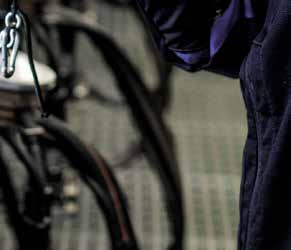







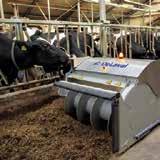
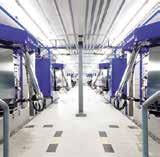






Describe your farm and facilities. We have sand-bedded free stalls and one pen with water beds. We milk three times a day in a double-12 parallel parlor.
What forages do you harvest? Haylage, corn silage, high-moisture corn and winter rye.
How many acres of crops do you raise? We raise 1,250 acres.

What quality and quantity do you harvest of each crop? We have 500 acres of hay and 700 acres of corn. We get our corn silage rst from the corn acres and whatever corn is left goes for high-moisture corn. We aim for 160180 relative feed value on alfalfa at 55% to 63% moisture for haylage. We look to harvest about 28 tons per acre on corn silage at 64% to 69% moisture.
Describe the rations for your livestock. All of our animals are on a total mixed ration. Heifers: grass hay, corn silage, mineral mix and haylage. Fresh cows: corn silage, haylage, soybean meal and dry corn. Dry cows: corn silage, dry hay and winter rye. Our rations are balanced by Chad Kieffer of Ag Partners.


Describe your harvesting techniques for alfalfa and corn silage. For alfalfa, we cut it, merge it and chop it with a Krone chopper. We harvest all of our own feed. Our cutting interval is 24 to 28 days on alfalfa.

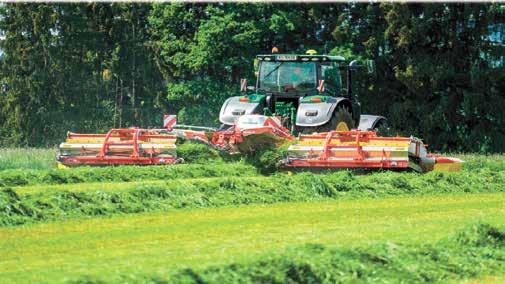
What techniques do you use to store, manage and feed your forages? We have drive-over piles. We used to make a lot of bags, and then we converted to drive-over piles. We were making a lot more feed, and piles took less space.
Throughout your career, have you changed the forages you plant, and how has that decision helped your operation? We haven’t changed how we harvest our crops too much over my career. We started planting rye a few Turn to FORAGE | Page 20
years ago. Planting rye means we can get manure down in the summer, and we have feed for heifers and dry cows.
“We tried other products, and we found out: Udder Comfort™ is the one that really works. It’s the best for fresh cows, and for any type of swelling, any cow with elevated SCC or a hard quarter, mastitis, even an injured quarter,” says Brad Palmer of Pigeon Cove Farms, Warfordsburg, Pennsylvania.








“We got back on the Udder Comfort last year for its effectiveness and ease of use. Spraying fresh udders with Udder Comfort after each milking for 5 days after calving really helps our milk quality,” he adds.
Three generations are involved in the operation: Brad and Linette and their son Logan and daughter Hailey and Brad’s parents Lonnie and Debra.



They milk 440 Holstein and Jersey cows, averaging 94 pounds with SCC 140,000.


“We like using Udder Comfort in the parlor. It delivers better coverage and better results,” adds Hailey. She does herd health and breeding while Logan is mostly involved in crops and feeding. Hailey also shows Ayrshires, a breed she loves that her mom grew up with.
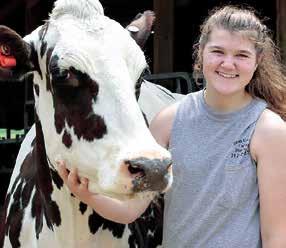
Describe a challenge you overcame in reaching your forage quality goals. Harvesting crops in a timely manner and facing delays due to rain.
















How do quality forages play a part in the production goals for your herd?











It plays a big part. We adjust our nutrition plan if needed to obtain our production goals. If we start having issues, we recheck our samples and do a walk through on our cows to see if anything has changed. We don’t focus on our



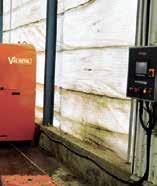
milk as much as we used to. We focus on our components. The cows produce in the 4% to 5% range for protein and 4.2% to 4.5% for butterfat.
What are management or harvesting techniques you have changed that have made a notable difference in forage quality? We make sure our hay is cut when it is optimal for best quality feed. We make sure our corn silage is processed properly.
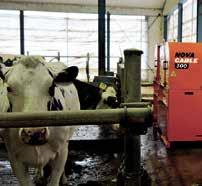
hrs., #558869.............. $349,000

JD S660 2014, PRWD, Duals, 1732 hrs., 1317 Sep. hrs., #532082............ $189,500
JD S680 2014, PRWD, Duals, 2349 hrs., 1668 Sep. hrs., #531966............ $195,000
JD S780 2020, PRWD, Duals, 1030 hrs., 749 Sep. hrs., #188309.............. $409,000

JD 9870 STS 2009, PRWD, Duals, 3579 hrs., 2579 Sep. hrs., #563914 ...... $94,500
JD S780 2018, 2WD, Duals, 1215 hrs., 826 Sep. hrs., #555412 ................ $319,000
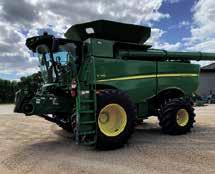


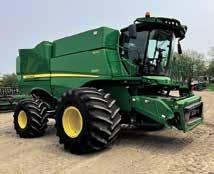
JD S690 2012, PRWD, Duals, 2312 hrs., 1645 Sep. hrs., #551148............ $149,000
JD 9770 STS 2011, PRWD, Duals, 3576 hrs., 2560 Sep. hrs., #555084 .... $116,900
JD S790 2020, PRWD, Tracks, 804 hrs., 584 Sep. hrs., #554727 ............... $509,000
JD S780 2022, PRWD, Floaters, 238 hrs., 170 Sep. hrs., #554623 ............ $569,000
JD S770 2022, PRWD, Floaters, 36 hrs., 20 Sep. hrs., #563704 ............... $546,000




JD S790 2018, PRWD, Duals, 1643 hrs., 1218 Sep. hrs., #549845............ $309,000
JD S790 2018, PRWD, Duals, 1852 hrs., 1407 Sep. hrs., #549847............ $295,000
JD S790 2018, PRWD, Duals, 1459 hrs., 1055 Sep. hrs., #549846............ $329,000
JD S790 2022, PRWD, Duals, 25 hrs., 20 Sep. hrs., #560618 ................... $639,500








JD S790 2022, PRWD, Singles, 25 hrs., 20 Sep. hrs., #560619 ................. $639,500





JD 9870 STS 2010, PRWD, Duals, 3394 hrs., 2260 Sep. hrs., #554931 .... $118,900
JD S690 2016, PRWD, Duals, 2544 hrs., 1820 Sep. hrs., #547267............ $219,900
JD S780 2018, PRWD, Duals, 1622 hrs., 1131 Sep. hrs., #276170............ $305,000
JD S770 2021, 2WD, Duals, 718 hrs., 585 Sep. hrs., #560264 .................. $425,900
JD S780 2019, 2WD, 627 hrs., 460 Sep. hrs., #559821 ............................ $359,000



JD S790 2021, PRWD, Duals, 705 hrs., 526 Sep. hrs., #555189................ $499,500
JD S780 2019, PRWD, Floaters, 1289 hrs., 889 Sep. hrs., #275242 .......... $349,000
JD S680 2012, PRWD, Duals, 2500 hrs., 2000 Sep. hrs., #554973............ $129,900
JD 9750 STS 2003, 2WD, Duals, 4830 hrs., 3367 Sep. hrs., #565004 ......... $37,500
JD S680 2014, PRWD, Duals, 2321 hrs., 1575 Sep. hrs., #555096............ $169,900
JD S790 2022, PRWD, Duals, 145 hrs., 90 Sep. hrs., #557140.................. $629,900
JD S790 2022, PRWD, Duals, 428 hrs., 302 Sep. hrs., #552839................ $579,500

JD S780 2020, PRWD, Duals, 932 hrs., 640 Sep. hrs., #557137................ $419,000
JD S780 2019, PRWD, Duals, 1562 hrs., 1131 Sep. hrs., #549680............ $319,000
JD S780 2021, PRWD, Duals, 654 hrs., 469 Sep. hrs., #191047................ $489,000
JD S780 2019, PRWD, Floaters, 1604 hrs., 1145 Sep. hrs., #549684 ........ $319,000
JD S780 2022, PRWD, Tracks, 337 hrs., 251 Sep. hrs., #563618 ............... $619,000
JD S780 2022, PRWD, Duals, 426 hrs., 307 Sep. hrs., #563710................ $549,000
JD S780 2022, PRWD, Duals, 465 hrs., 374 Sep. hrs., #563633................ $549,000
JD S780 2022, PRWD, Tracks, 316 hrs., 231 Sep. hrs., #563619 ............... $619,000

JD S780 2022, PRWD, Duals, 454 hrs., 347 Sep. hrs., #563635................ $549,000
JD S690 2017, PRWD, Duals, 1433 hrs., 1187 Sep. hrs., #549457............ $280,700
JD S780 2022, PRWD, Duals, 241 hrs., 183 Sep. hrs., #554094................ $565,000
JD S780 2022, PRWD, Tracks, 243 hrs., 192 Sep. hrs., #563701 ............... $619,000
JD S780 2022, PRWD, Tracks, 300 hrs., 280 Sep. hrs., #561020 ............... $623,000


JD S780 2019, PRWD, Duals, 1559 hrs., 1058 Sep. hrs., #549682............ $319,000
JD S770 2018, PRWD, Duals, 2261 hrs., 1652 Sep. hrs., #549678............ $259,900
JD S680 2017, PRWD, Duals, 1516 hrs., 1053 Sep. hrs., #273646............ $219,900 JD S680 2012, 2WD, Duals, 2756 hrs., 2032 Sep. hrs., #552659 .............. $119,900

............ $549,900

JD S790 2018, 2WD, Duals, 1579 hrs., 1128 Sep. hrs., #273973 .............. $289,000
JD 9770 STS 2011, 2WD, Duals, 3460 hrs., 2570 Sep. hrs., #555709 ......... $92,500
JD S790 2022, PRWD, Tracks, 38 hrs., 21 Sep. hrs., #553771 ................... $695,000




JD S770 2021, PRWD, Duals, 568 hrs., 486 Sep. hrs., #554050................ $405,000
JD S680 2013, PRWD, Duals, 2485 hrs., 1604 Sep. hrs., #551147............ $165,000
Case IH 2388 1998, 2WD, Singles, 3876 hrs., 2943 Sep. hrs., #549406 .... $34,900
JD S780 2020, PRWD, Duals, 955 hrs., 659 Sep. hrs., #188459................ $419,000
JD S780 2022, PRWD, Duals, 462 hrs., 345 Sep. hrs., #553598................ $549,000
JD S770 2022, PRWD, Duals, 270 hrs., 195 Sep. hrs., #554014................ $560,000
JD S780 2022, PRWD, Tracks, 299 hrs., 238 Sep. hrs., #554013 ............... $619,000
JD S780 2020, PRWD, Duals, 1545 hrs., 1204 Sep. hrs., #531610............ $349,000
JD S790 2021, PRWD, Tracks, 734 hrs., 530 Sep. hrs., #191075 ............... $549,500
JD S680 2015, PRWD, Duals, 2585 hrs., 1865 Sep. hrs., #190078............ $174,500
JD 9760 STS 2004, PRWD, Duals, 4389 hrs., 3109 Sep. hrs., #564023 ...... $53,500
JD S780 2020, PRWD, Duals, 964 hrs., 740 Sep. hrs., #564897................ $419,500


JD S780 2022, PRWD, Duals, 91 hrs., 56 Sep. hrs., #563620 ................... $579,000
JD S780 2020, PRWD, Duals, 1488 hrs., 1145 Sep. hrs., #191082............ $349,000
JD X9 1100 2021, PRWD, Tracks, 942 hrs., 735 Sep. hrs., #552917.......... $749,000
JD X9 1100 2021, PRWD, Tracks, 876 hrs., 715 Sep. hrs., #552921.......... $769,000
JD S790 2019, PRWD, Duals, 1772 hrs., 1426 Sep. hrs., #532032............ $299,000

JD S780 2020, PRWD, Duals, 1076 hrs., 784 Sep. hrs., #188458.............. $409,000
JD S790 2018, PRWD, Duals, 1315 hrs., 940 Sep. hrs., #554633.............. $329,000
JD S790 2021, PRWD, Singles, 937 hrs., 770 Sep. hrs., #557277 ............. $479,000
JD S790 2021, PRWD, Duals, 585 hrs., 449 Sep. hrs., #556669................ $499,500
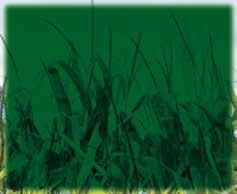
JD S690 2017, PRWD, Duals, 2103 hrs., 1461 Sep. hrs., #552684............ $249,900

Ederer Dairy Supply Plain, WI 608-546-3713
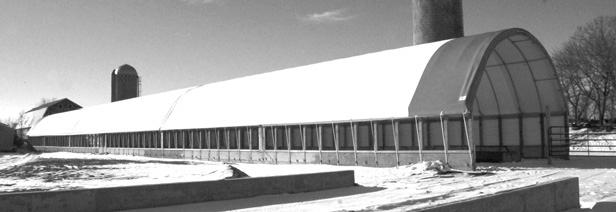

DeLaval Dairy Service



















Kaukauna, WI 866-335-2825

Joe’s Refrigeration Inc. Withee, WI 715-229-2321











































Mlsna Dairy Supply Inc. Cashton, WI 608-654-5106
Professional Dairy Services Arlington, WI 608-635-0268
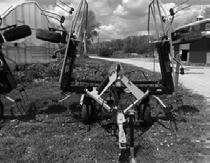


Redeker Dairy Equipment Brandon, WI 920-346-5579


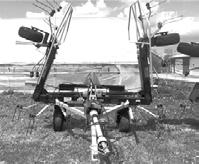
The Scharine Group Inc. Whitewater, WI 800 472-2880



Mt Horeb, WI 800-872-3470
Farm Systems




Melrose, MN 320-256-3276
Brookings, SD 800-636-5581
Advanced Dairy Mora, MN
320-679-1029

Pierz, MN 320-468-2494
St. Charles, MN
507-932-4288 Wadena, MN 218-632-5416



FLANDREAU, S.D. – After one year of showing rabbits at her county fair, Josephine “Josie” Sutherland was asked to show dairy cattle for the following year. She agreed, although not having grown up on a dairy farm, and her passion for dairy cattle and the industry took off from there.
“I just loved how their temperament was so different from the beef animals at our own farm,” Sutherland said.

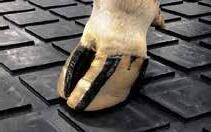
Sutherland, the 19-year-old daughter of David and Dawn Sutherland of Flandreau, was named in May as one of the 10 nalists for the 70th Princess Kay of the Milky Way.
As a junior at South Dakota State University in Brookings, studying dairy production with a minor in ag business marketing, Sutherland said she wants to be able to have conversations about dairy with other college students.
“They are often overlooked,” she said. “These students are looking at social media, and we assume they understand what is going on. Sometimes that is not the case.”
Sutherland wants to have one-onone conversations with this age group to help combat information they are reading on social media that is not true.
The day the nalist announcement
JERRY NELSON/DAIRY STAR
nalists, Sutherland has been lling her summer with local events throughout her home county of Pipestone. She said she is looking forward to connecting with the other nine nalists.
Sutherland is also excited about the value that dairy princesses can bring to the industry.

“It is a good way to make the dairy industry known to kids because they see the crowns and are so excited, but the dairy princess program also grabs the attention of adults,” Sutherland said. “They wonder why we are walking around in crown and sash, and then from there, meaningful conversations can start.”
Sutherland said those conversations are valuable because she is able to talk with consumers on a personal level so they are able to better understand the dairy industry.
“I tell consumers that dairy is a nutritious option,” Sutherland said. “There are so many different ways that dairy products can be enjoyed.”
The South Dakota native has been showing dairy cattle in Minnesota since she was in third grade. From there, Sutherland became more involved through 4-H quiz bowl and dairy judging. She was able to meet more people in Pipestone County who were connected to the dairy industry.
video was released, Sutherland was helping a friend move from one dorm to another at SDSU. She had not planned on watching the video for the sake of her nerves.
“I asked one of my friends to watch
it and let me know,” Sutherland said. “We were in the basement moving a futon when she called asking if I had watched it. She told me to go watch it immediately.”

Josie Sutherland prepares a cow for a dairy show June 26 at Newalta Dairy near Pipestone, Minnesota. Sutherland is represen ng Pipestone County as a Princess Kay of the Milky Way nalist. Turn
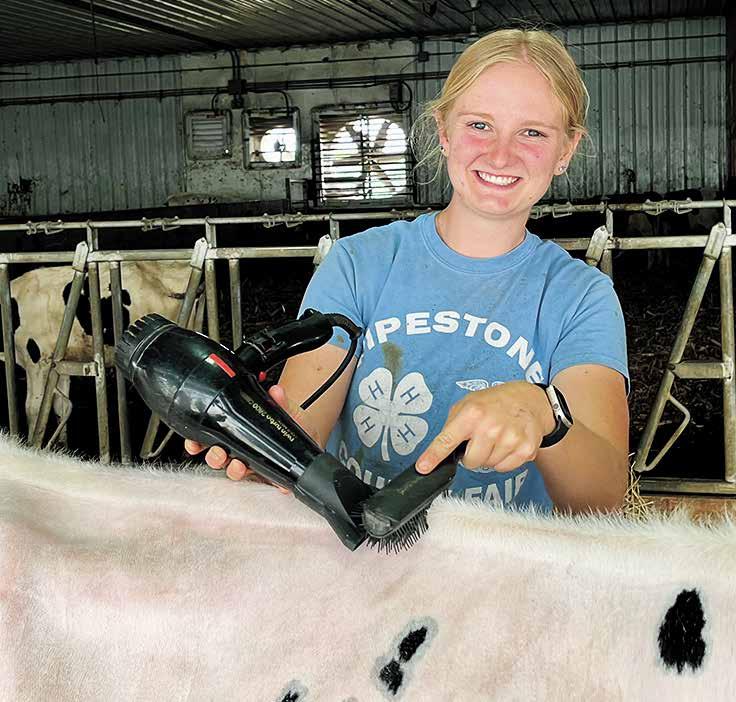
Since being named as one of the -

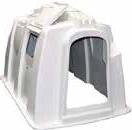





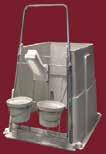

Sutherland continued to lease cattle until buying a few of her own in 2020. She now has purchased three and calved in two of her own, bringing her total to ve animals. In 2020, she also started milking for a local dairy farmer.
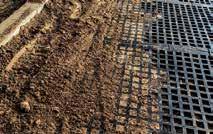
Paul Mueller Company’s Milk Tower™ features Mueller® Temp-Plate® heat transfer surface that removes more heat from milk in the same amount of time, compared to other silos. Reach maximum cooling efficiency and maintain temperature even when the tower is not 100 percent full.

Central Ag Supply
Advanced Dairy Spring Valley, WI; Mora, MN; Pierz, MN; Wadena, MN; St Charles, MN
Juneau, WI; Baraboo, WI
Ederer’s Dairy Supply Plain, WI; Blanchardville, WI; Dodgeville, WI
Central Ag Supply
Juneau, WI; Baraboo, WI
J. Gile Dairy Equipment, Inc.
Seehafer Refrigeration, Inc. Marshfield, WI; Sparta, WI
Redeker Dairy Equipment
Brandon, WI
Stanley Schmitz Inc. Chilton, WI
Seehafer Refrigeration, Inc. Marshfield, WI; Sparta, WI
Total Dairy Services Kewaunee, WI
United Dairy Systems West Union, IA
Sioux Dairy Equipment Rock Valley, IA; Colton, SD
Gorter’s Clay & Dairy Equipment Pipestone, MN
United Dairy Systems West Union, IA
Ederer’s Dairy Supply Plain, WI; Blanchardville, WI; Dodgeville, WI
Cuba City, WI
Monroe Westfalia Surge Monroe, WI
J. Gile Dairy Equipment, Inc.
Stanley Schmitz Inc. Chilton, WI
Tri-County Dairy Supply Janesville, WI
Tri-County Dairy Supply
Fuller’s Milker Center
Janesville, WI
Fuller’s Milker Center
Professional Dairy Services Arlington, WI
Cuba City, WI
Professional Dairy Services
Lancaster, WI; Richland Center, WI
Lancaster, WI; Richland Center, WI
Eastern Iowa Dairy Systems Epworth, IA
Arlington, WI
Redeker Dairy Equipment Brandon, WI
Eastern Iowa Dairy Systems
Gorter’s Clay & Dairy Equipment
Pipestone, MN
Leedstone Melrose, MN; Glencoe, MN; Plainview, MN; Menomonie, WI
Leedstone Melrose, MN; Glencoe, MN; Plainview, MN; Menomonie, WI
Midwest Livestock Systems
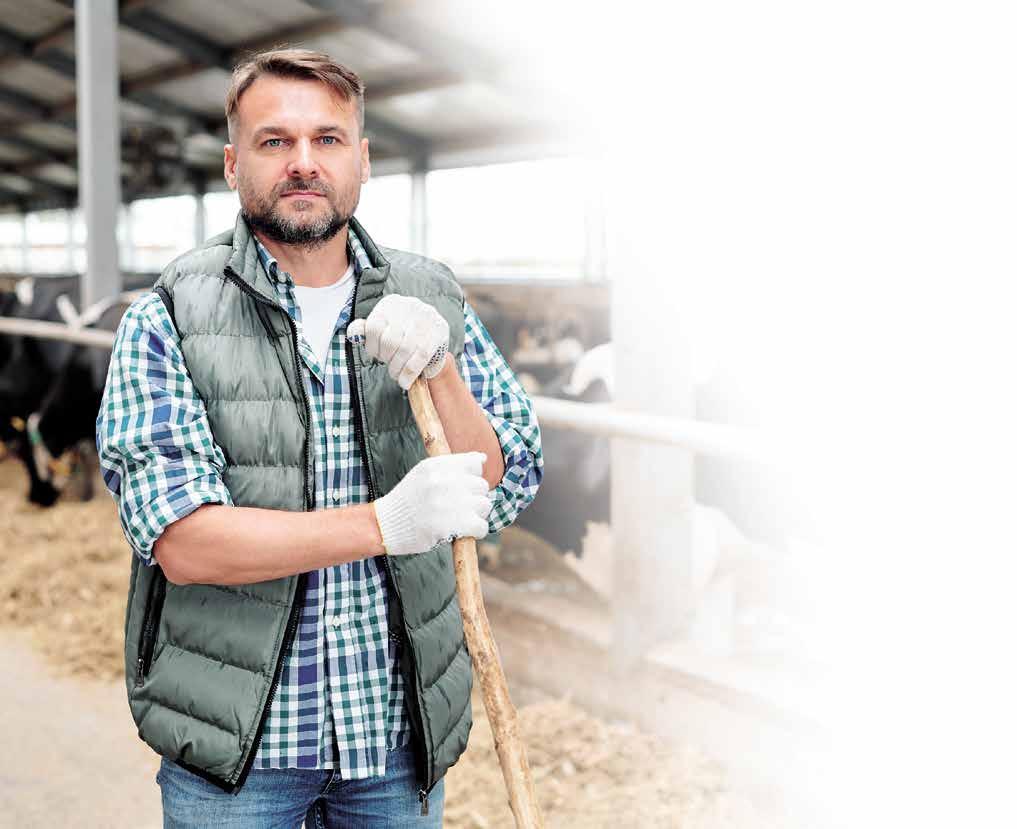
Zumbrota, MN; Menomonie, WI; Renner, SD
Glencoe Co-Op Assn. Glencoe, MN
S&S Dairy Systems St. Charles, MN
Monroe Westfalia Surge Monroe, WI
Glencoe Co-Op Assn. Glencoe, MN 1-800-MUELLER
Epworth, IA
Sioux Dairy Equipment Rock Valley, IA; Colton, SD
OTSEGO, Minn. – Whether she is welcoming visitors onto her farm or connecting with people during her travels, Jalyssa Beaudry eagerly shares with consumers her knowledge about and passion for the dairy community.
Beaudry, the daughter of Brian and Theresa Beaudry, was named a nalist for the 70th Princess Kay of the Milky Way. She is the fourth generation on her family’s farm near Otsego, where they milk 65 cows and farm 300 acres.

“We have people who walk by our farm all the time or drive past really slow,” Beaudry said. “Anytime I see people walking and they want to see a cat or a cow, I invite them in and give them a tour. I explain to them how we do things on our farm to help them get a better knowledge of dairy.”
While visiting New York, Beaudry saw the opportunity to make a connection with a young consumer on the subway. She started a conversation about her experiences growing up on a dairy farm.
“He was so amazed at the fact that farmers actually use tractors,” Beaudry said. “I was able to show him pictures of our cows and equipment.”
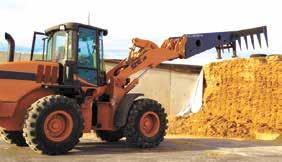
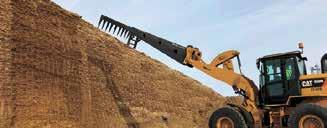

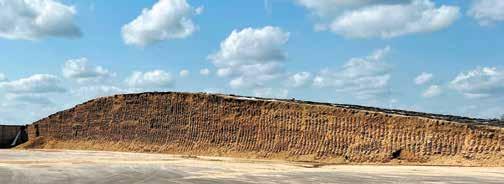
Since graduating with her four-year degree only two years after graduating
from high school, Beaudry has decided to continue her education by attending graduate school in the fall. She is pursuing a master’s degree in agricultural economics.
“I am currently doing research on







the protability of automatic milking systems,” Beaudry said. “My future goal is to help the dairy industry advance, whether it be with automatic milking systems or new innovations that can help farmers in the future.”
If crowned as Minnesota’s new Princess Kay, Beaudry said she is ready to use the opportunity to connect with consumers of all ages, especially children.
“Connecting with them at a young age will help them to remember more of that information in the future,” Beaudry said. “If you can connect with them multiple times, even from one princess to another, they will build upon what they have learned through each new interaction.”
Beaudry has already been making these connections throughout her summer serving as a Wright County Dairy Princess. She has been using her upbeat personality to talk to consumers about choosing real dairy options.
“Everyone, especially kids, needs real dairy in their diets because it helps them build strong bones and teeth,” Beaudry said. “Real dairy, coming from a cow, is nutrient packed and has better health benets than plant-based alternatives.”
When at county events, Beaudry interacts with multitudes of people, including students, families and farmers. Beaudry said she wants to see that people in the community have the opportunity to interact with dairy farmers on a regular basis.
Many of the farmers Beaudry was able to interact with in Wright County were the encouragement that pushed her to compete in the dairy princess program at the state level.

While Sutherland has been a dairy representative in Pipestone County for numerous years, she did not have experience with the dairy princess judging process. This is due to Pipestone County not having county-level judging. To get her rst experiences in front of judges, she attended the 2022 May event to participate in practice sessions. This year, when going in front of the judges for real, she was prepared.
“My plan was to not worry about it too much,” Sutherland said. “I just wanted to be natural and be myself because there is no other way.”
Sutherland said she is amazed by the support she has received since being named as a nalist. She has been able to connect with past nalists from
her county as well as many dairy farmers from the area.
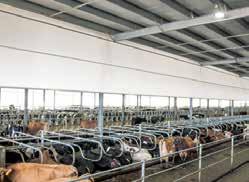
“The emotion and support that I have gotten from a lot of dairy farmers in our county alone has been amazing,” she said. “It is so fun to see their reactions.”
Sutherland is ready to continue connecting with people from all over the state of Minnesota while preparing for the next round of judging in August. Sutherland said she is eager to use her voice to represent the dairy farmers of Minnesota.

“I am good at using my voice and being a leader when I need to be,” Sutherland said. “It has helped me to be able to connect with people of all ages.”
“I felt that it would make our county proud,” Beaudry said. “I am able to be out in the community, letting people know who I am and teaching them about the nutrition facts of dairy, what we do on our farms, and … our passion and love for the dairy community.”
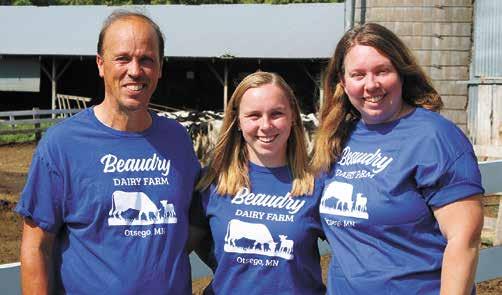
On the day the nalists were announced, Beaudry was spending time with her family for Mother’s Day. Her six younger siblings and her parents, along with various members of her extended family, were gathered at her grandparents’ house.
“I turned on the announcement video on the TV, and I was watching it with my grandma,” Beaudry said. “The rest of the family was all playing the card game 500 because we always play it at every family event.”


While the rest of the family nished up the last round of 500, Beaudry watched as the video began to play. During the biography of the rst nalist announced, Beaudry said she started to realize it was her.
“Then the family turned around from the card game and it was my picture on the screen,” Beaudry said.


As a nalist, Beaudry is looking forward to her time that will be spent at the state fair, and she is already making plans for her butter twin that will soon be carved in her likeness.
“I am planning a potato feed to use my butterhead,” Beaudry said. “I hope to see all of Wright County there and whoever else would like to join us.”
On the farm, Beaudry’s main responsibilities include cleaning, organizing and remodeling projects. She has redone the grain room, calf pens, chicken coops and cow yard. Between projects, she helps with milking cows, doing close to a quarter of the milkings per week.
“I am looking forward to using my rsthand experience on the farm to further help the dairy community,” Beaudry said. “Graduate school is the next step to continue that passion.”

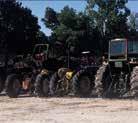
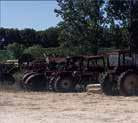
CIH 215 Magnum, 2,500 hrs., FWA .....$138,000
CIH 8950 1,600 hours ..............................$165,000
CIH 8920, 2WD, 1000 hrs. .........................$13,000

CIH 8910, 2WD, 4,100 hrs .........................$72,000

CIH 8920, FWA, 2600 hrs ........................$110,000
CIH 7240, 2,500 hours, coming in ...........$110,000
CIH MX120, 2WD, 3,800 hrs......................$72,000

CIH MX110, FWA, 1600 hrs. ......................$65,000
IH 1466 restored, new 20.4x38 Firestones$38,000
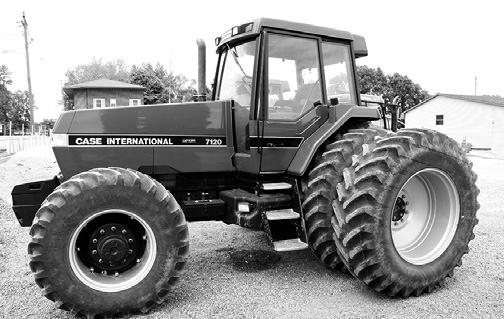
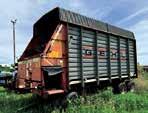
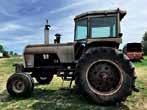
IH 1456, cab ..............................................$22,000
IH 1086, nice..............................................$21,000
IH 806 ....................................................$11,000
JD 2755, 5,600 hrs. ...............................$16,000
TILLAGE
527B ripper ............................................$13,500
CIH 530B................................................$18,000
CIH 527B................................................$19,500
CIH 870 7-shank ....................................$38,000
CIH Tigermate II, 26’ ..............................$28,000
CIH Tigermate II, 26’ w/rolling basket ....$32,000
CIH Tigermate II 26’, w/28’ pull crumbler $31,000
CIH Tigermate 200, 30’ ..........................$44,000
CIH Tigermate 200, 28’ w/rolling basket$40,000
CIH Tigermate 200, 32’, w/4 bar drag ....$33,000
JD 714 11 shank chisel plow .................$14,000
CIH 5700 chisel plow, 23’ ......................$16,000


CIH 4800, 25’ ...........................................$6,500
CIH RMX 340 25’ disc w/mulcher ..........$42,000
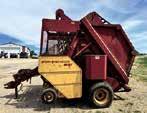
CIH 25’ 3900 disc ..................................$15,000
CIH 183 12R cultivator .............................$4,250
Brillion 9-shank disc chisel ......................$4,000
DMI 530 Ecolo-Tiger w/basket ...............$12,000
DMI 530 ripper w/leads..........................$14,000
DMI 530B w/lead ...................................$16,500
HAYING & FORAGE EQUIP.
Sitrex QR12, QR10, QRS rakes ....................New Kuhn 10-wheel rake w/center kicker wheels, like new ..................................................$8,500
Many sizes of rakes available
All Sizes of Sitrex Rakes.........................On Hand
GRAVITY BOXES & GRAIN CARTS
(2) Demco 365 .........................................$4,200
Many Sizes of Gravity Boxes ..................on Hand
Brent 657 gravity box, green & black, fenders ................................................$23,000
(2) Brent 644 box .......................................$18,000
Brent 644 ...................................................$16,500
J&M 385 ......................................................$6,500
J&M 540 box .............................................$13,500
Parker 4800 box...........................................$8,500
Unverferth 7250 grain cart .........................$29,500

MISCELLANEOUS
New Red Devil & Agro Trend Snowblowers



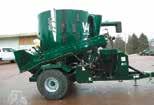
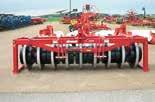

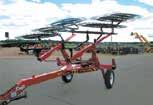
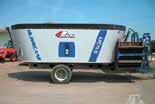
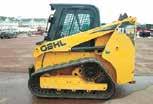
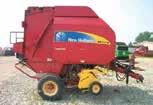

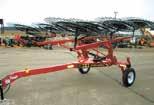

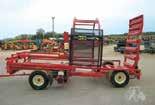



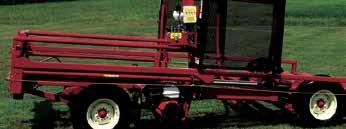









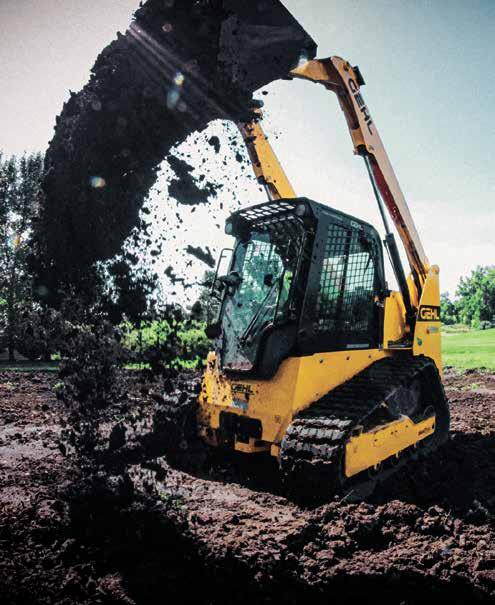














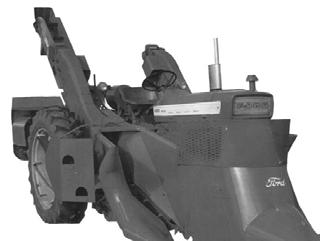


Tell us about your farm and family. My parents are Dennis and Sherry Burkle. I have two sisters, Cassie and Dannie, and my signicant other, Adrian Spores. My family and I manage our 130-cow dairy outside of Earlville, Iowa. We have Brown Swiss, Holstein, Jersey and one Ayrshire. My sisters and I grew up helping our parents on the farm, milking cows and feeding calves. Even today, we all help on the farm when we aren’t busy with vet school or high school. If we aren’t helping, my boyfriend is running around the farm helping things go smoothly. Coming from a small dairy in northern Wisconsin, you could say he didn’t take much training and is ready to jump right in whenever we need help.
What is a typical day like for you on the dairy? We milk cows in the morning, and after milking, we observe if any cows are in heat. Then, we clean up the parlor and scrape manure in other pens. We bed down as needed. If it is eldwork season, I help get equipment ready or operate equipment in the eld until it is chore time again. If it is not eldwork season, Dad and I work on other maintenance things around the farm.
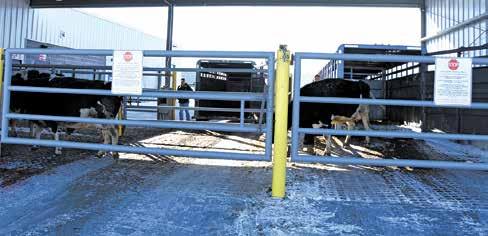
What decision have you made in the last year that has beneted your farm? I wanted to bring back articial insemination use in the breeding program. While I was growing up, all we ever used was bulls. Dad just wasn’t seeing the results he wanted after trying A.I. For safety and genetic improvement in the herd, I wanted to learn this skill and implement it back into our protocols.

Tell us about your most memorable experience working on the farm. Denitely working beside my dad every day. I started off helping in the barn and riding in the tractor and still help in the barn and run the tractor on my own. Following my dad around in my younger years started my love for this industry.
What have you enjoyed most about dairy farming or your tie to the dairy
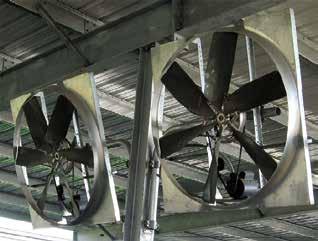
industry? It is denitely a perk working with cows over people most days. But, I do nd enjoyment telling my dairy story online.
What is your biggest accomplishment in your dairy career? At the moment, I had my rst A.I. calf hit the ground. This is one goal I’ve been working toward for a long time. I was able to get a live heifer calf out of one of my own animals I had purchased. It denitely made all the stress and frustration of learning this new skill worth it.
What are things you do to promote your farm or the dairy industry? I love promoting on social media: TikTok, YouTube, Instagram and Facebook (@Bigdreamsdairy). It’s incredible how some people have no idea about what we do on a day-to-day basis. The consumer can see all aspects of the farm, not just the milking end of things. When I’m not promoting online, I’m promoting in my community on my county’s dairy board. I was on the board years ago when I was county dairy princess and then came back on the board a little over a year ago.
What advice would you give another woman in the dairy industry? Don’t be afraid to go ahead and just do. Do tell your dairy story and go crush those goals of yours. It is crazy the access we have to talk to other dairy women and to bounce ideas off of each other.

What is a challenge in the dairy industry you have faced and how did you overcome it? Promotion. Sometimes our voice gets drowned out online with misinformation that gets put out there. With a new age, we need new ways to put out our product. The next generation wants to have a connection with where their food comes from. They want to know that the cows receive the utmost care. The easiest way to do that is by creating content for social media pages.
When you get a spare moment, what do you do? I enjoy horseback riding with my horse, Boaz, or I create or edit videos for my social media pages.
A few months ago, I attended the Carver County Dairy and Beef Expo. As a new Minnesotan, it was my rst time in attendance. I would highly recommend attending in the future if you get the chance. The sessions were informative, and it was a great opportunity to network and socialize.
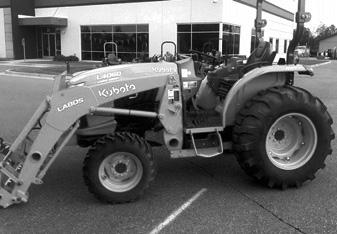
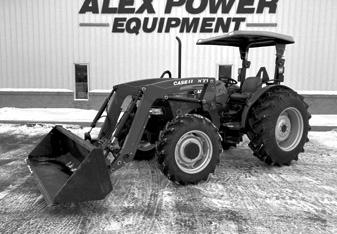




One of the sessions that caught my attention was presented by Tara Felix. Felix is a beef Extension specialist and associate professor at Penn State and at the forefront of crossbred beef-on-dairy research.
She presented preliminary results evaluating the impact of passive transfer on body weight at 9 months of age in crossbred calves in Pennsylvania. Calves had serum total protein measured within a few days after birth and were recorded as having either success of transfer of passive immunity (> 5.5 g/dL) or failure of transfer of passive immunity (< 5.5 g/dL). Calves with successful transfer weighed 73 pounds more than calves without successful transfer of passive immunity.
munity had on crossbred calves’ health until 1 month of age. They found calves experiencing failure of transfer of passive immunity (serum protein < 5.2 g/ dL) had greater odds of overall disease (respiratory disease and scours) than calves with successful transfer of passive immunity. This effect was regardless of sex or sire breed.
By Isaac Haagen University of Minnesota
These early studies highlight the importance of early life management of crossbred calves on dairies. However, like most topics regarding crossbred animals, research is still in its infancy and reects the still relatively new era of using beef-on-dairy animals. Beef semen sales continue to rise as shown in Figure 1, with most of the growth occurring between 2017 and 2021. In 2022, beef semen sales surpassed 9 million units for the rst time. These sales increases are attributed to beef semen being used to create crossbred animals from dairy farms.
This took me on a search for other research regarding passive transfer in this animal type, and I will highlight one more article evaluating the impacts of passive transfer on crossbred calves. In the second study, researchers from the University of California looked at the impact failure of transfer of passive im-


As we continue to use more beef semen on dairy farms, it is imperative we set these animals up to be successful until they are harvested. Crossbred calves deserve the same care and attention we provide our dairy calves. Transfer of passive immunity which is achieved through an excellent colostrum management program appears to be one of the steps to ensure crossbred calves are healthy and productive until harvest.
SOURCE: WWW.NAAB CSS.ORG/SEMEN SALES
Domes c beef semen sales from 2012 to 2022. In 2012, beef semen sales were 1,669,561 units compared to 9,008,608 units of beef semen sales in 2022.
Dana Adams, adam1744@umn.edu
320-204-2968
Joe Armstrong armst225@umn.edu

612.624.3610

Luciano Caixeta lcaixeta@umn.edu
612-625-3130
Gerard Cramer gcramer@umn.edu

612-625-8184
Marcia Endres miendres@umn.edu
612-624-5391
Joleen Hadrich jhadrich@umn.edu
612-626-5620
Les Hansen hanse009@umn.edu
612-624-2277
Brad Heins hein0106@umn.edu
320-589-1711
Nathan Hulinsky huli0013@umn.edu
320-203-6104
Karen Johnson ande9495@umn.edu
320-484-4334
Emily Krekelberg krek0033@umn.edu
507-280-2863
Claire LaCanne lacanne@umn.edu
507-332-6109
Brenda Miller nels4220@umn.edu
320-732-4435

Erin Royster royster@umn.edu
Isaac Salfer ijsalfer@umn.edu
320-296-1357
Jim Salfer salfe001@umn.edu
320-203-6093
Mike Schutz mschutz@umn.edu
612-624-1205
Melissa Wilson mlw@umn.edu
612-625-4276
Isaac Haagen hagge041@umn.edu
612-624-7455
The number of crossbred dairy cows in the U.S. continues to rise. Crossbreeding programs for dairy cows usually begin with a Holstein base, and most often Jersey has been chosen as the breed to cross with Holstein in the U.S. That’s likely because Jersey is the No. 2 breed for cow numbers in the U.S. However, globally, Jersey is far from the No. 2 rank for cow numbers in milk recording (DHI) or bull numbers summarized by Interbull. Globally, the Jersey breed is outranked by the Fleckvieh breed, the Montbéliarde breed, and the inter-related Nordic Red cluster of breeds (Viking Red, Norwegian Red, German Angler and Aussie Red) that has an Ayrshire foundation.
The egg and sperm that come together to create an offspring each contain one set of the 30 chromosomes, but they represent a random pick of the chromosomes from the grandparents. An individual egg or sperm may lean much more to one of its two parents than the other. Therefore, instead of 25%, 25%, 25% and 25%, the representation of the four grandparents after a sperm fertilizes an egg may be 15%, 35%, 38% and 12%, as an example.
By Les Hansen University of MinnesotaHowever, Jersey has indeed tended to be the turn-to breed in the U.S. for crossbreeding with Holstein. Jersey may seem like a good choice for dairy producers who seek cows with smaller frame sizes than a typical Holstein and who seek improvement in fertility and health from hybrid vigor. Hybrid vigor is a boost in performance from crossbreeding above the average of the parent breeds. On the other hand, when crossbreeding with Holstein, the Jersey breed may contribute unwelcome attributes such as udders that are closer to the ground, reduced value of bull calves and lower salvage value of cows.
Cattle have 30 pairs of chromosomes with genes aligned on them. A rst-generation cross of two animals from different breeds has exactly one set of 30 chromosomes from each of the two parent breeds. Therefore, the resulting offspring tend to fall in the middle of the two breeds for most traits plus a boost from hybrid vigor.

A rst-generation cross is tidy in terms of chromosomes from the two breeds. Animals receive one set of chromosomes from each of its two parents, so inheritance is 50% of genes from one parent and 50% of genes from the other parent.

This leads many to assume the same situation applies to genetic contributions from the four grandparents (25%, 25%, 25% and 25%). However, that is not the way inheritance from grandparents plays out.
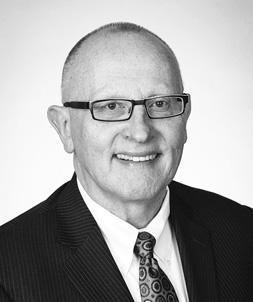
On average, full siblings share 50% of genes. However, that is only on average. Because of the non-uniform sample of chromosomes (genes) from grandparents reected in eggs and sperm, some full siblings will be more or less related to each other. People who have contributed their DNA to ancestry.com or 23andme.com are aware the sample of genes they received from each of their four grandparents is not uniform. Therefore, people are more related to some of their siblings than to others, and the same thing applies to comparing one cousin to another.
This brings us to the dilemma for dairy producers who like their rst-generation crosses of two breeds (say, Holstein and Jersey). The rst-generation cross has a full (100%) dose of hybrid vigor that contributes to its performance. Dairy producers may want to keep this 50:50 mixture and assume using a crossbred bull with the same breed mixture as a female will result in offspring with the same tidy 50:50 blend. By now, you should be aware that is not the case. Individual offspring may lean much more to one of the two breeds than the other. Therefore, for individual traits, outcomes are unpredictable compared with rst-generation crossbreds. Also, hybrid vigor is reduced to 50% of full hybrid vigor for offspring resulting from mating a Holstein/Jersey crossbred female with a Holstein/Jersey bull compared to rst-generation crossbred.
Consequently, most trained geneticists advise against mating a rst-generation crossbred female with a rst-generation crossbred bull of the same breed combination. Because many dairy producers are not aware of the non-uniform contribution of genes from grandparents, they may request semen of crossbred bulls from a breeding company. Breeding companies are willing to supply what dairy producers request, so they may offer semen from crossbred bulls.
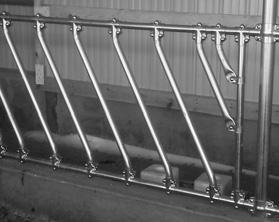
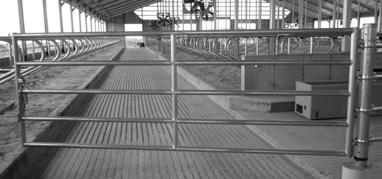
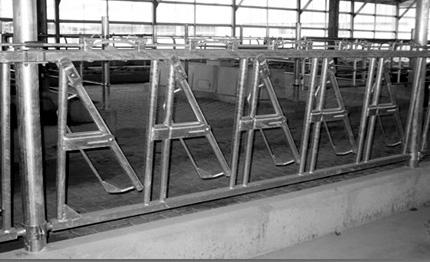




and added hygiene
• Simple and fast installation

• 5 year warranty
• Proven for extreme durability

• 5mm stainless cable inlay
• Guaranteed NEVER to stretch
• Grooved top for traction
• Can be used with automatic & skid steer scrapers


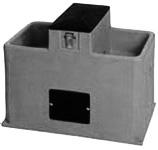

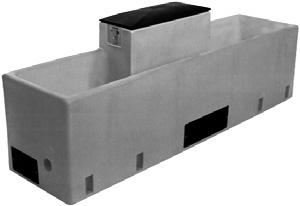
• 10 year warranty

Trained geneticists typically recommend that a rstgeneration (two breed) crossbred female should be mated to a bull from a third breed to help stabilize the contribution of chromosomes from breeds and to maintain a uniform 100% hybrid vigor for yet another generation. In subsequent generations, a simple rotation of bulls from three pure breeds will provide more uniformity of traits across generations in the resulting offspring and maintain a high average level of hybrid vigor (86% of that of rst-generation crossbreds).
Virtually all other livestock species routinely cross breeds or inbred lines within breeds to capitalize on hybrid vigor for commercial production. Until recently, dairy cattle have been the lone exception. Consequently, knowledge about crossbreeding has tended to be limited among dairy producers. Mating a rst-generation crossbred female to a crossbred bull with the same breed composition is not a recommended practice.
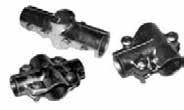

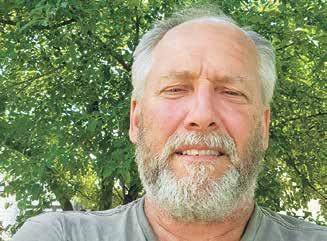
What was your average SCC last year?
Happke: 44,800
Middendorf: 53,000
Berktold: 53,000
Warmkagathje: 81,000
Reuter: 65,000 and a standard plate count of 2,000
Describe your housing and milking facilities.

Happke: We have a freestall barn that houses about 60% of our milk cows, and the other half of the freestall barn houses our youngstock from ages 4 months to breeding age. The rest of our milking herd is housed in our old tiestall barn that has been converted into free stalls. We have eight tie stalls left in our old barn that we use for fresh cows to make sure they get off to a good start. The tie stalls also hold sick cows and cows in heat if need be. All cow stalls have rubber mats. We use sawdust and a little bit of sand in our freestall barn and sawdust in the tiestall barn. Stalls are cleaned twice daily, and we also put lime down every single morning before pulling fresh bedding over the top. We have a double-6 herringbone parlor that we built in 2011. It may be small by today’s standards, but one person is able to milk alone and have no problems keeping up.
Middendorf: We have a stanchion barn. The cows are bedded with oats or wheat straw.
Berktold: Cows are housed in sand-bedded freestall barns and milked in a herringbone parlor.

Warmkagathje: We have a freestall barn with sand bedding. We have a rapid-exit double-8 parallel milking parlor.
Reuter: The cows are in one group with two Lely robotic milking systems in one barn. The barn has natural ventilation and is a 3-row, slated-oor barn. We bed the cows with kiln-dried sawdust and spread lime on the back of the stalls.
What top three management factors allow you to maintain your current SCC?
Happke: Clean cows, clean stalls and clean equipment. Every fresh cow is clipped within a few days after freshening. Tails are also clipped a few times a year to keep cows cleaner. Stalls are cleaned very well every day. Absolutely no wet spots are left in the stall. Some days this is a pain, but the work pays off. Our milking parlor is also clean. The milkers are free of debris. While milking, milkers are regularly hosed off of any manure.
Middendorf: Keeping cows clean and dry, genetics and dry treating all cows with Quartermaster.
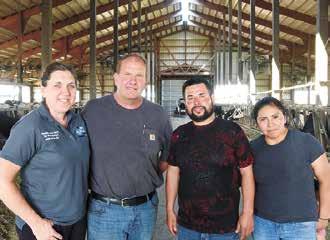
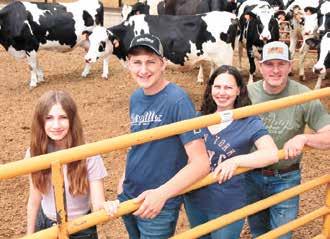
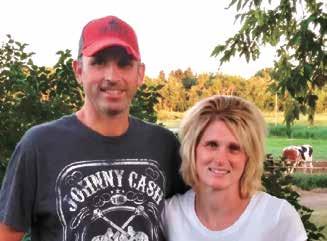
Berktold: Cow comfort, milking procedure and being able to cull high SCC animals.
Warmkagathje: I keep the same help. I have had the same help for 10 years going on 11 years, so it is the same people milking cows all the time. My employees take ownership. I’m not standing over the top of them; they want to please me and do a good job. Florencia Tepole, our lead milker, has a certain way she wants the cows prepped, and if employees don’t do it that way, they do not stay around. We dry treat the cows when they go on their dry period. Our somatic cell count never gets high anymore. We use a pasteurizer for feeding calves, so for any milk that has higher SCC, we pasteurize it and feed it to calves. We scrape the manure and clean the stalls three times a day.
Reuter: We get a SCC report from the robots every day, so that helps us nd and locate cows. We clean stalls and bedding. Comfortable cows and a good vaccination program have helped reduce the number of toxic cows.
What is the most important management decision that has assisted you in achieving a low SCC?
Happke: Consistency in top-quality feed, milking times and general cleanliness at all times.

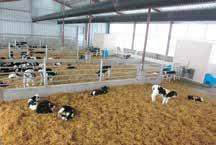



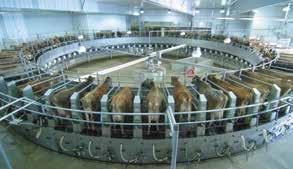




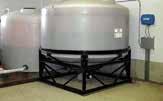











Middendorf: We concentrate more on cleanliness and prevention by using Milk Check wipes to prep the cows before milking, and we use a good post dip.
Berktold: Housing the cows in sandbedded free stalls.
Warmkagathje: Using sand bedding. Sand bedding keeps cows dryer and cleaner.
Reuter: Stall management and keeping the stalls clean.


How has your SCC protocol evolved in your career?
Happke: We have done the same management practices for the past 15 years. Teat sealant at dry off has probably been the biggest help.
Middendorf: We started using milking gloves and Milk Check pre-milking wipes.
Berktold: It hasn’t changed much in the last 20 years. Consistent milking routines and clean cows have made it possible to maintain a low SCC.
Warmkagathje: We have always tried to do a good job, but by moving from a stanchion barn to a freestall barn and parlor, our SCC dropped from 240,000 down to under 100,000.
Reuter: We vaccinate the cows for both E. coli and Klebsiella. We now have somatic cell counts on every cow every day instead of just once a month with DHIA.
We also culture everything instead of just a blanket treatment to make sure the antibiotics are actually going to work for the cow.
Tell us your milking procedure. Happke: We use a peroxide-based pre dip that we spray on each cow; then we go back and use a clean washcloth to wipe each cow clean and apply the milker. We use an iodine-based post dip spray. We don’t strip out cows unless we have a areup that we can’t nd. Kent milks in the morning, and Stacy milks at night. Kent’s sister is the only other person who milks when one of us is not able to be there.
Middendorf: We milk twice a day. First, we sanitize the equipment, then we prep each cow with Milk Check wipes. Next, we strip each quarter before attaching the unit. After milking, the cows are postdipped with Bovadine teat dip. We use all DeLaval equipment.
Berktold: We wipe the cows clean with paper towels, strip out each quarter, then post dip with iodine.
Warmkagathje: We wipe the sand off, dip with Assure from IBA Dairy Supplies, strip, dip again, wait 30 seconds, wipe them clean and dry, milk them and then dip with iodine for post milking. We singe the hair off their udders every few months so there is no extra hair, sand or manure on the udders.
Reuter: With robots, we have the brushes run two times on the cow and have it offset to make sure it gets the bottom of the teat clean and then use other settings.
If your SCC rises, what steps do you take to lower it again?
Happke: We really don’t have many problems with mastitis. When we do, we generally treat with tubes and have been using transdermal Banamine to help systemically.
Middendorf: If SCC rises, we culture any suspect cows, and if we nd a cow with contagious mastitis, it will be milked last and added to the cull list.
Berktold: We check for problem cows and discuss reasons why SCC has increased with the equipment dealer, milkers and vet.
Warmkagathje: It really doesn’t rise anymore.

Reuter: We will go through the robot and make sure that it’s cleaning the teats well. We make sure the brushes look good and the teat disinfectant is correct. Then, we make sure the post-dip spray is hitting the cow’s teats.

Why is it important to keep a low SCC?







Happke: It is important not only to keep a healthy herd but to provide a healthy product to consumers. Plus, healthy cows are easy to take care of. Treated cows take time and cost money.
Middendorf: It means we have healthy cows and are selling a good product. We also get a premium from the milk plant.

Berktold: Cows are healthier and easier to milk, and we save a lot of time and money not treating cows.
Warmkagathje: The cows are healthier, and they give a little more milk.
Reuter: Well, we still get a small monetary value for milk quality from First District Association. It helps in overall health of the cows and their production and reproduction.

Tell us about your farm and family.
Happke: We are the fourth generation on this farm. In addition to the dairy cows,


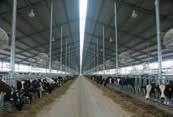

we raise about 100 beef and beef cross steers. We have 350 acres of corn and alfalfa with some additional rented land. We ship our milk to First District Association in Litcheld, Minnesota. We have four kids, ages 7-14, who are a big help to us. They enjoy being on the farm. They also show cattle at the county fair. Stacy also serves as princess coordinator for our county American Dairy Association.
Middendorf: We farm in Todd County with our children, Ethan and Abby. We milk cows and raise all our own replacements. We grow corn, oats, wheat and alfalfa.
Berktold: I farm with my parents, Tony and Diane, wife, Jolie, and our four children – Shelby, Myles, Garrison and Charlotte. We milk 150 cows and fatten out our steers. We raise corn, alfalfa and soybeans for feed.
Warmkagathje: It is my wife and I and eight kids. The oldest is 22 and the youngest is 4. They are involved in the day-today chores, helping with calf feeding and a little with milking. Ismael Tepole, my herdsman, and Florencia Tepole, my lead milker, are in charge, and if they need help, the kids are there to help hem. The kids are also active in 4-H. We farm about 800 acres: 400 acres of corn – half as cash crops and half for the cows – 200 acres of soybeans and 200 acres of alfalfa.
Reuter: Reuter Farms is my brother, Carl, and I and my son, Phil, who works for us as our herdsman. My son, Jake, works part time for us when we need help. We farm about 600 acres, with alfalfa, corn, soybeans and grass for the dry cows. Heifers are all custom raised. They all leave at 4 months old and return a month before they are due. Any feed I put up has to be dairy quality. We sell our milk to First District Association. We milk with two robotic milking systems.
Bongards Creameries has been maximizing value for many Minnesota dairy farmers since 1908. And we've products. We believe strongly in paying a premium
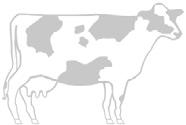

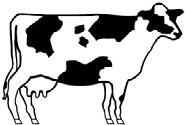
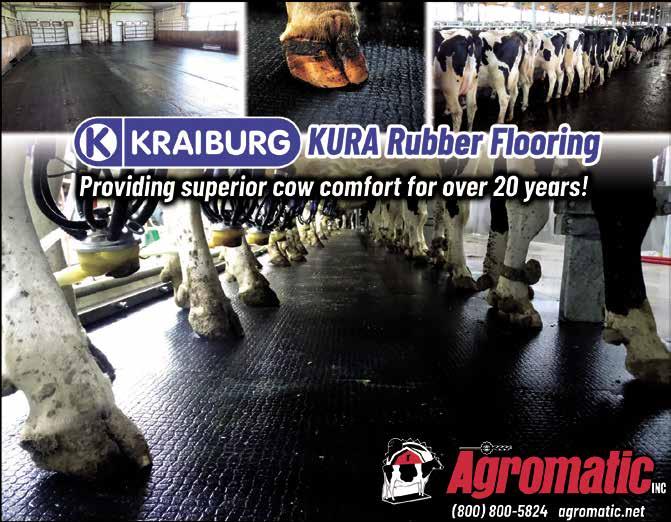



White Corrugated PVC liner panels
40” wide x 16’4” long $1950
White smooth PVC sheeting
4’ x 8’ x 1/2” thick $5750 FACTORY
Just like that, June is gone and over, and, wow, did it go fast. My National Dairy Month was lled with many dairy celebrations that have brought me so much fun and many memories. Check out some of my adventures on the road in June.

I had great opportunities to connect with the youth across Minnesota for dairy month. I traveled to BOLD Schools Summer Program in Oliva to visit about dairy farming, and we also made butter. Otter’s Day Camp invited me to join in on their Fun on the Farm theme. About 230 young campers got the fun opportunity of making butter with me or else ice cream with a fellow dairy farmer, Kathy. It was such a great day talking about dairy farming and dairy foods and even discovering our own skills to make tasty and delicious dairy foods. I also joined 4-H members from around the state via Zoom for their June Delicious Dairy Days. I shared a little bit about being Princess Kay, dairy farming and dairy foods before making a fun dairy recipe.
ByAt Gopher Dairy Camp, I spent an evening with wonderful young dairy leaders. Together we enjoyed good conversations, learned about various aspects of dairy with trivia and enjoyed a meal together.
At Farm America’s Taste of the Farm, the Faribault County Dairy Social and Meeker County’s Dinner on the Dairy, there was a lot of great fun, amazing food and conversations. One of my fondest conversations was with a 96-year-old man and his daughter. Together we shared our stories and those special moments on the farm.
Hutchinson Dairy Days and Redhead Creamery’s Curd Fest held a little bit of competition with hand-milking contests. Although I didn’t take home either of the rst-place awards, there was so much enjoyment in the encounters I had at these events. Meeting new people and sharing a little bit about dairy always makes my day.
Sibley, Clay and Goodhue counties hosted breakfasts on the farm. Each were such a hit. Each had a wonderful breakfast and lots of activities for the whole family, including farm tours, hay rides, learning how to milk a cow or naming the new calf. I was able to visit with families about life on the dairy farm and being Princess Kay.
June brought me multiple opportunities on various TV stations. With Midwest Dairy holding voting for this year’s Flavor of the Fair, I was able to announce the top three contenders with the news anchors and viewers of both WCCO and Fox 9. While introducing, tasting and reviewing the avors, we also chatted about my year as Princess Kay and how dedicated our farmers truly are. I also was able to join Twin Cities Live, and, along with the help of Coborn’s, we were able to cook up unique and tasty cheeseburgers, a great summer meal incorporating dairy.
Norman County welcomed me for the Norman County Fair in Ada. I was stationed in the youth education building with Dolly the cow, visiting with all those passing through.
Stopping by Commons on Marice and Brookstone Manor were both fun adventures where I enjoyed visiting with the residents. I was able to share my story on the farm as well as being Princess Kay. It is so rewarding to hear residents’ stories about being on the farm as well, especially over a delicious dairy snack.
The dairy celebrations will continue into July as it is National Ice Cream Month. Ice cream has always been an addition to all of the tiny celebrations in my life. Scoop up your favorite avor of ice cream to celebrate your time in the barn, in the eld or for a refreshing treat to cool down with on a summer day.
Princess Kay of the Milky Way Rachel Rynda serves as the Minnesota dairy community’s goodwill ambassador. Rynda grew up in Montgomery, Minnesota, on her family’s dairy farm. She attends University of WisconsinRiver Falls, studying agriculture business with a minor in dairy science, with plans to assist farmers with their nances. She enjoys participating in sports and singing in church with her dad.
Princess Kay is active doing school visits, representing dairy farmers at the Fuel Up To Play 60 activities in conjunction with the Minnesota Vikings and sharing the importance of dairy farming and dairy foods at appearances across Minnesota.
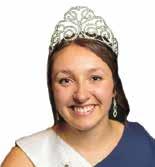
While writing for Dairy Star, I have met many dairy farmers who want to leave the next generation a wellplanned, successful and meaningful legacy through their farms. I am always impressed by that level-headedness because it takes courage to give careful thought to one’s inevitable death.





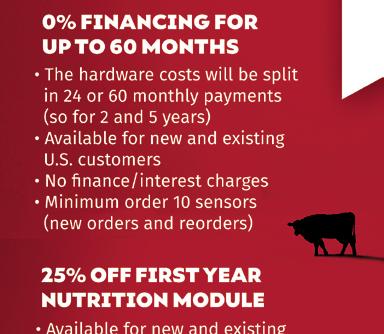

 By Jan Lefebrve Staff Writer
By Jan Lefebrve Staff Writer

Sadly, I am no such planner. You could accurately say I am in denial of my eventual demise. Thank goodness my husband and I do not own a farm, or even a house any longer, because he can’t even get me to discuss where we will be buried someday.
I remember one day in the early 2000s when my parents dragged my sisters and me to the cemetery in our hometown to see their newly purchased tombstone at the plot they had paid for years before. I say dragged because I didn’t really want to see my parents’ names carved on what seemed to me like a welcome sign for the Grim Reaper. Afterall, I have my superstitions. If I have my plot and tombstone ready to go, will the universe say, “Well, she’s all set. Maybe she could leave a little early.”
It took me many years before I was brave enough to list myself as an organ donor on my driver’s license.
As we stood around to admire my parents’ stone, Dad showed it off like he was Vanna White revealing a puzzle on “Wheel of Fortune.” Mom mentioned how classy and understated their tombstone was, not showy like some of the others in the vicinity of their plot. Dad pointed out the lush tree nearby, how he would be shaded after he kicked the bucket.
On the back of their stone, they had included the words “parents of” with a list of my three siblings and me in order of age. It gave me the shivers to see my name on a tombstone. There for all to see was my formal name “Janice” instead of “Jan,” which really stunk.
As my sisters oohed and aahed over my parents’ selections, I stood back, wanting to bolt. They all thought I was being silly. Afterward, my parents insisted we go out to lunch to celebrate.
I realize my folks were not unique. It seems to be the accepted practice to prepare one’s burial site oneself. Younger people are taking the step. My sister and her husband have their plot lined up.
I remember seeing tombstones here and there while growing up where a spouse had died and the living spouse had his or her name engraved along with the deceased one, probably in an effort to save time later. Some had even put “19__” in the year-of-death spot so that only the last two numbers would need to be lled in upon their passing. I always wondered about that. Where was their faith in the advancement of medical science? Humans were living longer and longer. Later, as the millennium approached, many still had unlled blanks. I thought they better giddy up or face an extra charge for editing by sandblaster.
My husband, Mark, remembers being in a eld, harvesting corn with a few other family members, when his grandfather arrived with a tombstone in the back of his pickup, newly purchased and engraved. His grandpa was proud as heck, showing the stone to everyone there, recruiting his grandsons to help him unload it into his garage where he would keep it until needed. I wonder if, over time, it became dusty and neglected there like an unused sawhorse, a place to set paint rags or cans of WD-40.
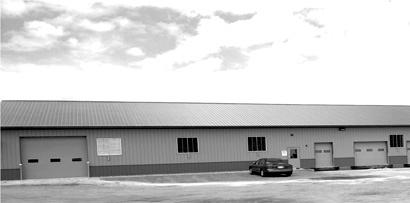
It’s important to note that the universe did not take Mark’s grandpa sooner because of his preparedness. He was active and happy until he died at 92 years old.

A colleague at Dairy Star told me her grandparents were able to buy plots with her great-aunt and great-uncle a while back in a package deal with the plots aligning heads to heads. She told me there was a spirited discussion among the two couples as to which pair would face
the sunrise and which would face the sunset.
Perhaps my discomfort comes from fear of buyer’s remorse. After purchasing a plot and tombstone, what if I’d change my mind? What if the shady tree by my plot died of oak wilt and was cut down to an ugly, beetleinfested stump? What then? What if someone I secretly couldn’t stand bought the plot next door? I know I wouldn’t technically be there anymore, off to the great beyond and all … but still.
Maybe cremation, followed by scattering, is the route for me.
I like Larry Hagman’s idea. Remember him, the actor who played J.R. Ewing in “Dallas”? I once saw him interviewed on television. He said, when he died, he’d like to be cremated and sprinkled in a eld on which his
friends would grow and harvest wheat. They could make the wheat our into a cake, and then “everybody could have a piece of Larry.” It’s a beautiful idea, in a creepy sort of way.
For me, I would just as soon have somebody else make the decisions – after I’m gone. I have great respect for those brave tombstone buyers, but I just can’t join their ranks.
It is only out of kindness for loved ones left behind that people plan and pay for these things ahead of time. I’m all for the paying part. I’ll gladly keep enough money set aside so my children don’t have to pay for my nal resting place and any marker required, but isn’t that good enough? Can’t they step up and decide the rest? After all, I’m already supplying the corpse.
My great-grandfather Henry Nelson left his home state of Wisconsin in the 1870s, wended his way to Dakota Territory and homesteaded our ancestral farm. My wife and I visited Wisconsin some years ago in an effort to discover why Henry left.

The rst thing I noticed about Wisconsin was its trees. Wisconsin has more trees than you can shake a stick at. The trees out here on the barren Dakota prairie stand in straight rows because people planted them. Wisconsinites know this and joke that we prairie dwellers think that we’ve stumbled across a park whenever we see three or more trees clumped together.
The second thing I noticed about Wisconsin was its roads. Wisconsin has no straight roads. Any Badger State road that runs both straight and true to the compass does so entirely by accident. Reading a Wisconsin roadmap is similar to studying the convoluted loops of a ngerprint.

Wisconsin also has vast areas that are comprised of lowlands interspersed with rocky, tree-clad hills. Wisconsinites tend to call their hills “bluffs” and their sloughs “protected wetland areas.”


Our route took us through Wisconsin Dells. We couldn’t resist taking a ride on the famous Wisconsin Ducks.
The Wisconsin Ducks are World War II-era amphibians. As their name implies, they gobble breadcrumbs tossed out by tourists and leave yucky duck doots on the sidewalk.
That’s not true. The Ducks are, in fact, a Frankenstein conglomeration that involves a truck and a boat.
Our particular Duck was piloted by a blonde and bubbly young lady named Becky. Becky motored us out to a breathtakingly beautiful wilderness area of the Wisconsin River where she stopped the Duck and held her passengers at gunpoint until we each gave her $4.

That’s not quite true. But, Becky did make it known that her Duck-driving gig didn’t pay very well and that the only way she would be able to afford her college tuition would be if we each bought a $4 brochure from her. I purchased one and misplaced it almost immediately.
During our Duck ride, we were told that the Wisconsin River owes its rich brown hue to tannins. I have another theory: The Wisconsin River is made entirely of Guinness stout.
This theory is based on my observation that Wisconsinites really like their beer. For example, while in Wisconsin we stayed with a friend of ours named Dan. One day, Joe, Dan’s Wisconsinite pal, dropped by for a visit. During his visit, Joe expressed deep concern about his personal beer supply. “I’m down to just three or four cases,” he lamented.
By Jerry NelsonWisconsin’s beer obsession has seeped into its food. I witnessed this one evening when Dan decided to cook bratwursts. But, did he simply toss them onto the grill? Of course not. He boiled them in beer rst.
I suppose the thought process goes something like, “OK, so this bratwurst was once a living animal. Maybe if I boil it in beer, it will somehow absorb some of the brew, and that will boost my daily beer intake. This can only be good.”
Dan also enjoys a distinctive kind of cheese called Beer Kaese. I don’t know if it contains any actual beer but can attest that it smells like old, fermented gym socks.


Dan has a philosophy regarding both beer and cheese. “There are no bad ones, only different ones,” he said.
Dan took us to Milwaukee where we toured one of the city’s major businesses, which produces – surprise – beer. The Miller Brewing factory churns out beer with ruthless, industrial efciency, bottling and canning about a kabillion gallons of the stuff every day, all of which is needed to satiate thirsty local Wisconsinites.
That’s not quite true. Some of the beer makes it as far as Chicago.
We later attended a professional baseball game, featuring the Milwaukee Brewers. This event was held at – surprise again – a place called Miller Park. This classy, state-of-the-art facility was made classier by the presence of the Brewers’ mascot, a cartoonish guy named Bernie Brewer.

Bernie seemed quite hyper. Perhaps someone had spiked his beer supply with caffeine.
Another elevating part of the Brewers game was the seventh inning stretch when T-shirts were shot into the crowd and a sausage race was held.
Speaking of sausage, I was encouraged to have a beer and a brat at the ballpark. I did so and discovered that a ballpark beer costs roughly as much as an entire keg back home.
As my wife and I wound our way homeward, I formed a theory regarding why Henry left the Badger State. I think he grew tired of stumbling across all those parks.
Jerry is a recovering dairy farmer from Volga, South Dakota. He and his wife, Julie, have two grown sons and live on the farm where Jerry’s great-grandfather homesteaded over 110 years ago. Jerry works full time for Dairy Star as a staff writer and ad salesman. Feel free to email him at jerry.n@dairystar. com.




When I entered practice in 1981, local dairy farms were just nishing the transition from housing wet calves in barns to hutches. We still had a few farms that raised calves in pens and a couple that had those small, mechanically ventilated barns with calf crates inside, but it was not long until everyone got away from group housing.
About 20 or 25 years later, automatic calf feeding systems were introduced to our area. Four of our clients installed them around the same time. Veterinarians were shocked at the prevalence of bovine respiratory disease in the rst 60 days of life in those barns. It was often close to 100%. I did a non-scientic study that looked at the impact on milk production, using 305-day mature equivalent milk production, for these four farms. There was a remarkably consistent drop of about 1,400 pounds of milk for lactation one once all the group had been raised in the new barns when compared to previous times when calves were raised in hutches. All four farms discontinued use of the barns not long after.
pressure tubes as described by the Dairyland Institute. We saw much lower mortality rates in these barns, but BRD rates were still very high, often 50% to 80%. In subsequent years, some producers tried several ways to mechanically ventilate automatic feeder barns. Around the same time, we began to see group housing systems using lockups and bottle holders that typically had nine calves per pen. During the last 10-15 years, lung ultrasound was described as a diagnostic tool in wet dairy calves, and its use to diagnose respiratory disease in calves became common a few years later. Lung ultrasound is a more sensitive diagnostic tool for BRD than physical exams, so one would expect greater rates of disease using ultrasound.
By Jim Bennett ColumnistFast forward another 10-15 years, and we began to see automatic feeder systems come back into the area. This time, producers were only putting about 25 calves in a pen, compared to 30-35 in the past, barns were naturally ventilated and well designed, and all had positive
Throughout this whole period, the only constant has been that the prevalence of respiratory disease in group-housed calves is much greater than calves housed in hutches. Surprisingly, there is still little published data on the relative risk of disease by housing system. There have been some scientic publications that try to quantitate the cost of respiratory disease in wet calves, though. For example, according to Dunn (2018), the presence of one 3 centimeter, consolidated lung lesion any time before weaning results, on average, in 1,155 pounds less milk in the rst lactation. Ollivet (2023) speculates that much of the negative effect on production is due to reduced growth rates before 60 days of life, but we do not know that for sure. Other studies have shown calves with lung consolidation were slower to get pregnant (Teixeira, 2017), were less likely to survive to rst lactation (Adams, 2016) and grew more slowly (Cramer, 2019). There are also many studies showing negative effects of clinical pneumonia in young calves.
There are a few things we do know. For one, adequate mechanical ventila-

tion of wet calf barns is difcult in cold climates. For example, according to the Dairyland Initiative website, “Natural ventilation is the preferred method of ventilation. … Mechanically ventilated facilities are not recommended for calves in climates similar to Wisconsin’s.” Visit the website for reasons, but, in short, at a minimal ventilation rate of four exchanges per hour, the inlets are so small that it is almost impossible to get good air ow and air quality throughout the barn. We also know, from the Dairyland Initiative website, that naturally ventilated barns do not achieve enough thermal buoyancy to properly exchange air because small calves do not generate enough heat. This is the main reason positive pressure tubes were developed for these facilities.
We also know that smaller groups are better. Several studies have shown increased disease incidence, mortality, nasal or respiratory scores (Godden, 2021) for groups of seven, eight or nine calves or less, when compared to larger groups. The differences in risk range from 40% to 100% higher in the larger groups. We do not know if nine calves housed in a lock-up and bottle-feeder style barn have different rates of BRD than nine calves housed in an automatic-feeder barn, however. We also do not have much published data using lung ultrasound scores for different sized groups and feeding systems in calf barns.
After all these years, it is remarkable that we do not know more because lung consolidation is so common in group housing and because it is so expensive. The total cost to the U.S. dairy industry per year must be enormous. It is also remarkable how much risk dairy producers are willing to take on when building group housing facilities because the cost of high rates of respiratory disease could easily be more than the cost of the build-
ing in just a few years. However, building group-housing buildings may be understandable, considering the difculty nding adequate labor to manage calves in individual housing. It is also remarkable that nearly every popular press article about group housing of wet calves says nothing about increased rates of consolidation or clinical respiratory disease.
Without much data, what we know about group calf housing and BRD is as follows: 1. Natural ventilation is by far the best, but in winter, calves will need clean coats and lots of deep, dry and clean bedding. Positive pressure tubes are a must. 2. Trying to keep these barns warm is a losing battle, usually resulting in remarkably high rates of consolidation and clinical respiratory disease. 3. Nine or fewer calves in a pen is best. 4. The shared nipple in auto-feeder barns may be another signicant risk factor. 5. With sensitive diagnostic tools, expect the prevalence of lung consolidation in wellmanaged automatic-feeder barns to be more than 50% on an annual basis.
So, if you are planning to build a barn with group housing, be diligent and prepared. Determine your current rates of respiratory disease and/or lung consolidation and then project rates in the new facility. Is the cost of increased respiratory disease worth the gain? You may decide that it is, but if that is the case, make sure the design is right and the best it can be with current knowledge.
Bennett is one of four dairy veterinarians at Northern Valley Dairy Production Medicine Center in Plainview, Minnesota. He also consults on dairy farms in other states. He and his wife, Pam, have four children. Jim can be reached at bennettnvac@gmail.com with comments or questions.

#546919 ....... $308,000
JD 8700 2016, Kernel Processor, PRWD, 1470 hrs., 1065 CH hrs., #532572 ....... $339,000
JD 8700 2016, Kernel Processor, PRWD, 1840 hrs., 1103 CH hrs., #525709 ....... $324,000
JD 8800 2017, Kernel Processor, PRWD, 1559 hrs., 862 CH hrs., #524820 ......... $355,000
JD 8800 2017, Kernel Processor, PRWD, 1728 hrs., 870 CH hrs., #544616 ......... $339,900
JD 8800 2016, Kernel Processor, PRWD, 2604 hrs., 1707 CH hrs., #175182 ....... $268,100

JD 9500 2023, Kernel Processor, PRWD, 200 hrs., 100 CH hrs., #557710 ........... $629,900
JD 9500 2022, Kernel Processor, PRWD, 542 hrs., 317 CH hrs., #565391 ........... $554,000
JD 9600 2021, Kernel Processor, PRWD, 866 hrs., 538 CH hrs., #565399 ........... $420,000
JD 9600 2020, Kernel Processor, PRWD,












CH hrs., #543646 ......... $503,000
JD 9800 2021, Kernel Processor, PRWD, 448 hrs., 302 CH hrs., #550106 ........... $518,000
JD 9800 2021, Kernel Processor, PRWD, 573 hrs., 369 CH hrs., #552624 ........... $553,000
JD 9800 2020, Kernel Processor, PRWD, 1291 hrs., 833 CH hrs., #536344 ......... $497,000
JD 9800 2020, Kernel Processor, PRWD, 1470 hrs., 942 CH hrs., #554135 ......... $459,900
JD 9800 2019, Kernel Processor, PRWD, 899 hrs., 660 CH hrs., #550175 ........... $503,000
JD 9800 2019, Kernel Processor, PRWD, 1893 hrs., 1368 CH hrs., #543355 ....... $390,000
JD 9900 2022, Kernel Processor, PRWD, 517 hrs., 330 CH hrs., #565395 ........... $595,000
JD 9900 2021, Kernel Processor, PRWD, 608 hrs., 401 CH hrs., #565397 ........... $574,000
JD 9900 2020, Kernel Processor, PRWD, 784 hrs., 455 CH hrs., #561177 ........$523,000
JD 9900 2020, Kernel Processor, PRWD, 849 hrs., 661 CH hrs., #553436 ........... $508,000
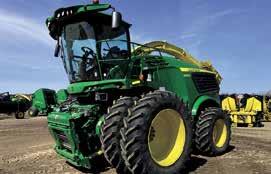
JD 9900 2019, Kernel Processor, PRWD, 1224 hrs., 884 CH hrs., #550177 ......... $493,000
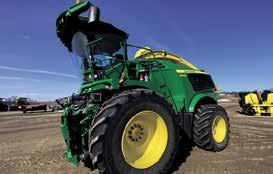

Claas 940 2020, Kernel Processor, PRWD, 650 hrs., 480 CH hrs., #532728 ........ $399,900
Claas 970 2018, Kernel Processor, PRWD, 2257 hrs., 1639 CH hrs., #533174 .... $299,000
The Fourth of July is a fun holiday around our place. Our farm is at one of the highest elevations in our county, so watching rework shows – both professional and amateur – just requires some camp chairs in a pasture. Smoking steaks and a cooler of beer after milking makes for a great evening celebrating our country’s independence. For an even more impressive show, climbing the 80-foot Harvestore gets you above the trees. One year when I was a kid, I counted six towns’ rework shows visible at the same time.
We live around 1 mile from Elko Speedway. On some race nights, when the wind is in the right direction, I can hear every word of the national anthem and who won the heats. Every Fourth of July weekend since I can remember, the racetrack




has had a special night of racing followed by a rework show. It was one of the highlights of my summer, probably because my aunt and cousin from Colorado also tended to visit that weekend and brought reworks with them we could launch in the driveway while the adults constantly told us to be careful. Fireworks being illegal in the state at that time made it all the more fun.
Usually we are halfway through hay by the Fourth of July. We get all our family members hanging out over the holiday weekend to help unload small square bales. This year, we haven’t even started cutting hay as the continuing drought set the hay back, and I’m waiting for there to be a bit more out there to cut. Last weekend, we received close to .75 inches of rain, which was




just enough to nudge the hay into growing a bit. We make small squares to feed calves. They are easier for us to handle and portion to the calves than round or big square bales. I guess this year we will have to throw all those bales ourselves.
From the Zweber Farm
 By Tim Zweber Farmer & Columnist
By Tim Zweber Farmer & Columnist
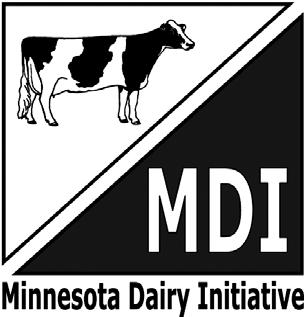

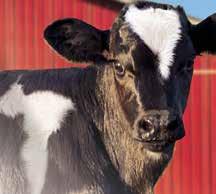




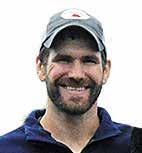
We haven’t started cutting hay yet, but a Jersey-cross cow we dried off the other day named Fiona felt she should lead a group of young heifers out under a fence and into one of the hayelds. I now know that there is more hay than I expected after chasing them through the eld. The hills are pretty awful, but the low spots are surprisingly tall and thick. I better keep looking for a hay merger though. There are places where even raking two rows together wouldn’t be enough to feed the chopper without it just pulling the material in and not cutting it. We used to have our hay custom chopped until maybe ve years ago, and I still haven’t purchased a merger.
We were thinking we’d plant sorghum sudangrass or millet this summer, but based on the fact that late-planted soybeans around here just nally came up this week after almost a month in the ground, I’m glad we didn’t plow up the hayeld we were planning to plow. I doubt the seed would have germinated very evenly. Because most of the grass in the pastures is either dormant or growing extraordinarily slow, we fenced in that 36 acres and have been grazing it. I already have to feed a large square bale and a half a day to the cows to supplement the poor pastures. Here’s hoping we get some rain and they come around, or we’re going to have to sell off a lot more cows. Cull prices are at an all-time high right now, so we’ve shipped 10 cows in the last couple weeks and will probably sell some more off for dairy.
I’m off to get the dry cow and heifer group reunited and put them in a pasture with more robust fences. Then, I need to start getting hay equipment ready for next week. Until next time, keep living the dream and make sure you’re careful lighting those reworks. You don’t want to have to explain how you lost a nger recreationally.
Tim Zweber farms with his wife, Emily, their three children and his parents, Jon and Lisa, near Elko, Minnesota.



Summer in Minnesota. We long for it. Dream about it. Count down the weeks and days until it begins during the many months of snow and cold.
We now nd ourselves in prime season, at the height of our Minnesota summer. It is a time of busyness on our dairies and in our farm businesses, in our homes and with our families.
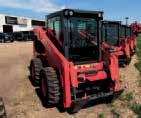
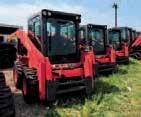

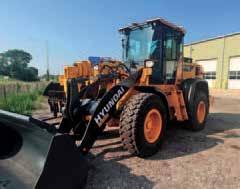



At NexGen Dairy, we’ve been especially busy this summer. Between accompanying youth to several Minnesota dairy youth shows, working in our market garden, constructing a new heifer barn, completing the daily tasks on the
By


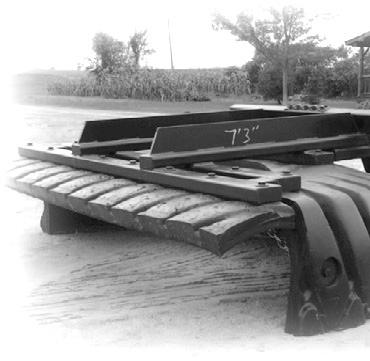

dairy and eldwork, we are nding the days speeding by. This season has also been especially tough with the lack of rain, summer heat and a depressed milk market. Lately, we, along with many of our peers, have discovered ourselves often running on empty at the end of a long day. In these times when we feel tired, challenged and stressed, it’s important to take stock of the small daily blessings on our dairies or the small sense of pride felt in the completion of a small task. These small, often simple things can give us a quick reminder of why we decided to become dairy farmers or work for a dairy business.
This past week, our entire team was busy chopping hay, and Megan was left to pregnancy check heifers with Adeline, Ellen’s oldest child, who is 7 years old and home for the summer. Adeline took on the task of reading the vet check list and directing Megan to the heifers that needed a pregnancy diagnosis or an ultrasound examination. She then recorded the results and any other information for each heifer on the list. Slowing down and working patiently with a 7-year-old was a small blessing. It’s easy to focus on getting things done quickly, but these moments are what we need. How many aunties are present with their nieces and get to know them as they grow up? How many interesting questions are asked by 7-year-olds about what we’re doing and
why? Throughout those moments and questions, we nd ourselves reminding ourselves why we do what we do.

Ann Voskamp, a Christian author, states it well: “The whole of life – even the hard – is made up of the minute parts, and if I miss the innitesimals, I miss the whole. These are new language lessons, and I live them out. There is a way to live the big idea of giving thanks in all things. It is this: to give thanks for this one small thing. The moments will add up.”
Our lives are an accumulation of days and small moments spent on the dairy. When we are challenged, looking for small blessings can make all the difference. A few examples of small daily blessings we cherish at NexGen are a hot cup of coffee and conversation in the barn in the morning with our father, a healthy heifer born from a good cow, a greeting from an energetic employee starting work for the day, getting up early in the coolness of the summer morning to hear the quietness or the birds waking up as the sun is rising or just watching the cows eat fresh feed that has been delivered.
A similar idea can be applied to small, simple everyday tasks. When feeling overwhelmed, focusing on the small things, on small wins, can give us something to work toward. Yes, big management decisions are important. However, when things feel too large to handle or are out of our control, focusing on small wins is extremely helpful. Admiral William H. McRaven emphasized this point further in his book, “Make Your Bed.” He notes that completing a small task at the beginning of the day – a small win – “will give you a small sense of pride, and it will encourage you to do another task and another and another. By the end of the day, that one task completed will have turned into many tasks completed. It will also reinforce the fact that little things in life matter.”
These little wins throughout our summer and our lives build to the pinnacle of a successful season and a life lled with purpose and time well spent. And so, we pause here in our article, amid summer, and move forward into the remaining season, focusing each day on the little things – maybe slowing down for a few minutes, reecting on the blessings we are afforded and/ or perhaps a small success of the day with our farm, with our family or in our lives.
Megan Schrupp and Ellen Stenger are sisters and co-owners of both NexGen Dairy and NexGen Market in Eden Valley, Minnesota. They can be reached at Nexgendairy@gmail.com.

GEA’s Velocity teat dip line brings you exceptional, cost-effective alternatives to iodine. They are easy to mix and can offer flexibility in concentration, emollient, and application based on farm needs.

100% Customer Satisfaction Guaranteed!
Central Ag Supply, Inc.
Juneau, WI • 920-386-2611
Baraboo, WI • 608-356-8384
Centre Dairy Equipment and Supply, Inc.
Sauk Centre, MN
320-352-5762 • 800-342-2697
Eastern Iowa Dairy Systems
Epworth, IA • (563) 876-3087
Fuller’s Milker Center, LLC
Lancaster, WI • Richland Center, WI 800-887-4634
J Gile Dairy Equipment, Inc.
Cuba City, WI • 608-744-2661
Kozlovsky Dairy Equipment
Kaukauna, WI • 920-759-9223
Weston, WI • 715-298-6256
Leedstone, Inc.
Melrose, MN
320-256-3303 • 800-996-3303
Glencoe, MN
320-864-5575 • 877-864-5575
Plainview, MN • 800-548-5240
Menomonie, WI • 715-231-8090
Midwest Livestock Systems, LLC
Zumbrota, MN • 800-233-8937
Menomonie, WI • 715-235-5144
Renner, SD • 800-705-1447
Monroe WestfaliaSurge
Monroe, WI • 608-325-2772
Preston Dairy Equipment
Sparta, WI • 608-269-3830
Sioux Dairy Equipment, Inc. Rock Valley, IA 712-476-5608 • 800-962-4346
Colton, SD Service • 800-944-1217
Edgerton, MN Chemical Sales 507-920-8626
Stanley Schmitz, Inc.
Chilton, WI • 920-849-4209
Tri-County Dairy Supply
Janesville, WI • -608-757-2697